
















Winter, Spring, Summer, Fall. Many people have a favorite season. Here in Florida, we don’t have much change in seasons. Sure, it gets cooler in the winter. It pollens everywhere in the “Spring,” and I’m sure many of you have other ways of marking the season. But one season everyone should be prepared for here is Hurricane Season!
The University of Florida offers great tips for this lovely season. Before the Storm:
• Check that generators and chainsaws are working properly.
• Stock up on fuel for tractors, generators, and other equipment.
• Scout for potential debris and secure it before the storm.
• Secure buildings like greenhouses, shops, and barns.
• Create a plan. Determine if you will evacuate – if you do so, leave with enough time to get to safety before the storm. Make sure all animals have current immunizations and Coggins tests to take with you if you evacuate them.
• Locate and protect important paperwork.
• Create a list of emergency contacts including your veterinarian, Farm Service Agency, your employees and their emergency contacts, and utility company.
• Become aware of the FSA Disaster Assistance Programs In addition, protect your livestock.
• Be sure to check fences and stock up on basic fence repair materials.
• The safest place for livestock is in open pastures with secure fences. It should have high areas to get out of flooding and be away from potential debris and possible downed powerlines.
• Poultry facilities should have adequate ventilation. Provide animals with food and clean water.
• Add identification to livestock in case of downed fences. A registered brand is your best bet, but luggage tags braided into tails or manes, ear tags with contact information, or even a paint stick/non-toxic spray paint can be used to mark the animals with your contact information.
• Have an emergency supply box accessible with halters, leads, tape, rope, tarps, fly spray, and animal medical supplies.
• Stock up on extra feed and water. This includes livestock feed as well as your farm dog/cat food. Wandering animals may be deprived of food and water for extended periods. Water is essential.
After the storm:
• Document any losses or damages. Save receipts for repairs and clean-up services. These will be needed for insurance claims and federal disaster programs.
• Be cautious of downed powerlines. Do not exit your vehicle if you are near a downed powerline. Contact your utility company or emergency personnel.
• Report damage and losses to your Farm Service Agency. If you don’t have damage, check with your neighbors. Just because you fared well doesn’t mean they did!
Until next month
Publisher/Photography
Karen Berry
Senior Managing Editor/ Associate Publisher
Sarah Holt Sales
Karen Berry
Sarah Holt
De De Floyd
Melissa Nichols
Creative Director/Illustrator
Juan Alvarez
Photography
Karen Berry
Staff Writers Al Berry
Sandy Kaster
James Frankowiak
Sean Green Intern Autum Miller
Contributing
Wade Osborne
John Dicks
Tiffany Dale
In The Field Magazine is published monthly and is available through local Hillsborough County businesses, restaurants, and many local venues. It is also distributed by U.S. mail to a target market, which includes all of the Greenbelt Property owners, members of the Hillsborough County Farm Bureau and Strawberry Grower’s Association.
Letters, comments and questions can be sent to P.O. Box 5377, Plant City, Florida 33563-0042 or you are welcome to email them to: info@inthefieldmagazine.com or call 813-759-6909
Advertisers warrant & represent the descriptions of their products advertised are true in all respects. In The Field Magazine assumes no responsibility for claims made by advertisers. All views expressed in all articles are those of the authors and not necessarily those of Berry Publications, Inc. Any use or duplication of material used in In the Field magazine is prohibited without written consent from Berry Publications, Inc.



Greetings,
With summertime drawing near and family vacations right around the corner, I want to take this opportunity to remind you of the varied benefits available to Farm Bureau members. Among those many benefits are discounts for car rental and lodging along with reduced costs for various, popular family-oriented entertainment venues.
When you consider all of those discounts with the many others available to Farm Bureau members, membership in our organization is really an economical investment for your family that also enables us to support our industry. Visit myffbf.org to see a full list of all member benefits.
Please mark your calendars for our upcoming Annual Membership Meeting. It will take place September 19 at the Florida Strawberry Festival grounds. More information will be provided to our member families as that date draws near.
I would like to extend my congratulations to Hillsborough County Farm Bureau Board Member Michelle Williamson. She was just named chair of the Governing Board for the Southwest Florida Water Manage-

ment District. In my estimation, Michelle epitomizes the very best qualities of a volunteer who supports both her industry and community in many different ways. She has helped with outreach through her in volvement with the Women’s Committee and count less instances of grassroots educational initiatives. We are fortunate to have Michelle as an active Farm Bureau member.
If you are not a Farm Bureau member, please consid er joining so that you can help us advocate and edu cate on behalf of agriculture with our varied audienc es. If you are a member, please volunteer at whatever level is practical for you. Please visit www.hcfarmbu reau.org for more information about our organization, member benefits and opportunities for engagement.
Thank you for your continued support of our industry, and again congratulations and our appreciation to Mi chelle Williamson.
Dennis Carlton, Jr. Dennis Carlton Jr. Dennis Carlton Jr. - President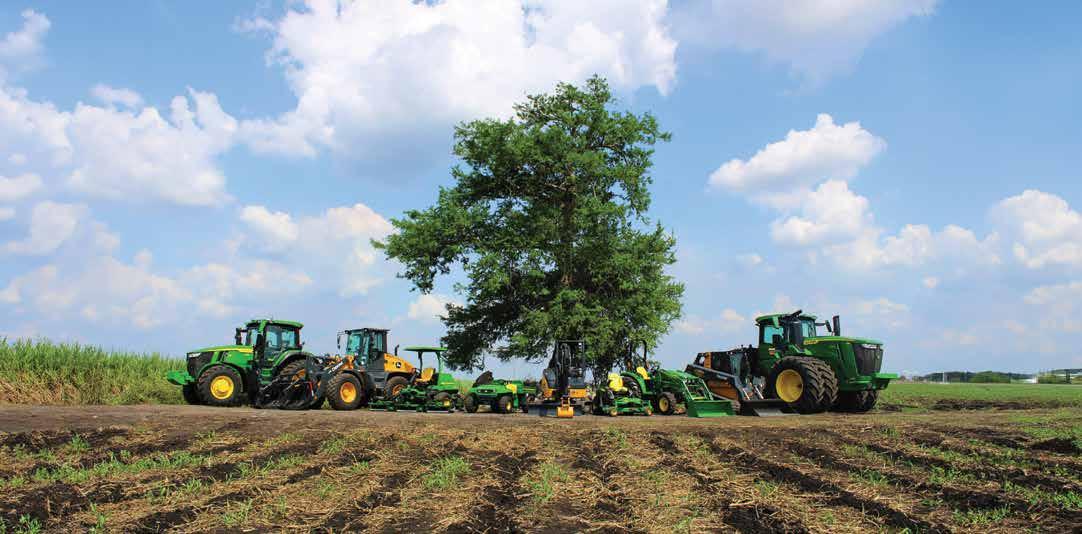

Dennis Carlton Jr, Casey Runkles, Madison A. Salter, Clay Joyner, Carl Bauman, Brittany Coleman, Travis Council, Jake Cremer, Tiffany Dale, Drew Futch, Brian Shoop and Michelle Williamson




Barbour’s Map Turtles, or Graptemys Barbouri, as they are known by their scientific name, are found in the southeastern United States, specifically in the Apalachicola and the Chipola Rivers and their tributaries in Alabama, Georgia and the Florida panhandle.
The Barbour’s Map Turtle is the largest species of map turtle. They have dark brown or black skin with light yellow to green markings. The head is broad, with patterns specific to the species. The top of the head has a large interorbital blotch connected by a branch to the postorbital blotches and to a point just under the eye.
A y-shaped pattern is found behind the orbits. There is also a light bar on the chin that follows the curve of the jaw. The top part of the neck has relatively wide stripes that are mostly of equal size. The hind limbs and tail are striped as well.
The carapace, or dorsal part of the shell, is not smooth and rounded but highly domed. It has a prominent vertebral keel, with laterally compressed dark spines on each vertebral scute. The second and third spines are most pronounced and wear down as the turtle ages. A lower longitudinal keel is seen on the scutes beside the vertebral keel. These scutes also have C-shaped yellow markings.
The overall color of the carapace is green to olive green. The plastron, or ventral part of the shell, is yellow and without markings other than a black border on the edge of each scute. A distinguishing feature of the plastron is the ridge on the abdominal and pectoral plates where they connect to the bridge.
Sexual dimorphism is present in Barbour’s Map Turtles. Females are much larger than males. Females have a carapace that is 15 to 33 cm long at sexual maturity, whereas mature males have a nine to 14 cm carapace. Therefore, females can be up to three times the size of males. Females also have much wider heads than males, along with a lower jaw that extends past the upper jaw.
The nesting season for Barbour’s Map Turtles is from June to August. The only reports of mating have been during the winter months from captive turtles. Nests are laid on sandbars or riverbanks as far as 656 feet away from the water. They typically contain four to 11 eggs that hatch in late August and September. The temperature during incubation determines the sex ratio of hatchlings as with many turtle species; warmer temperatures result in a higher number of
females. Males become sexually mature at four years, while females reach maturity at 15-20 years.
Basking is a common occurrence in this species of map turtle and usually takes place on rocks, tree branches, or tree stumps at a safe distance from shore. They have been recorded to bask at temperatures as low as 10 degrees Celsius, but in general, there is not much activity in colder months. Wary Barbour’s Map Turtles will dive into the water at the slightest disturbance. Due to their powerful jaws, females maintain a diet of primarily aquatic snails and freshwater mussels. Females have also been known to scrape freshwater sponges off hard substratum. Males and juveniles tend to ingest softer-bodied invertebrates such as caddisflies and dragonfly nymphs. Raccoons and other mammals cause the most harm to eggs and hatchlings, but introduced fire ants have also become a major problem. Fire ants are likely to pose a problem for many egg-laying reptiles, but we have few data quantifying those impacts.
The Barbour’s Map Turtle is listed as a vulnerable species by the IUCN. A number of conservation issues have contributed to their decline. First, free-flowing rivers that comprise the natural habitat of these turtles are slowly but surely being replaced by deep reservoirs with silt bottoms. Siltation destroys native mussel populations. Non-native Asian clams have invaded some streams within the Barbour’s Map Turtle’s range, providing a replacement food source. Various cases of unexplained shell rot is likely due to river pollution, and collection for the pet trade has also impacted populations of map turtles. Invasive plants have taken their toll on suitable nesting locations by colonizing sandbars, especially those that no longer flood.
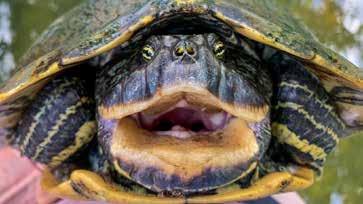





erning Board in August 2016 and reappointed in December 2020.
John Mitten was elected vice chair of the Governing Board. Mitten represents Hernando and Marion counties and is the franchise owner of Chick-fil-A in Spring Hill. Mitten was ap pointed to the Governing Board in October 2020.
Produce Safety Alliance Grower Training
A one-day course for produce growers and packers who fall under FSMAs Produce Safety Rule.
• April 25th – Live Oak https://psa042524.eventbrite.com
• May 23rd – Fort Pierce https://psa052324.eventbrite.com October 29th – Homestead https://psa102924.eventbrite.com
• November 7th – Jacksonville https://psa110724.eventbrite.com
• December 3rd – Lake Alfred https://psa120324.eventbrite.com December 12th – Wauchula https://psa121224.eventbrite.com Produce Safety Alliance Grower Training -
• June 11th – 13th https://psa061124.eventbrite.com
• Aug 20th – 22nd https://psa082024.eventbrite.com
• Oct 15th – 17th https://psa101524.eventbrite.com


Jack Bispham was elected secretary of the Governing Board. Bispham represents Manatee County and is the owner and operator of Red Bluff Plantation. Bispham was appointed to the Governing Board in November 2019 and was reappointed in May 2021.
Ashley Bell Barnett was elected treasurer of the Governing Board. Bell Barnett represents Polk County and is a former educator and community advocate. Bell Barnett was appointed to the Governing Board in December 2020 and was reappointed in August 2023.
The officers will assume their positions for the 2024-2025 term 24 hours before the June Governing Board meeting.

Governing Board members are unpaid, citizen volunteers who are appointed by the Governor and confirmed by the Florida Senate. The Governing Board sets policy for the District, whose mission is to protect water resources, minimize flood risks, and ensure the public’s water needs are met.
• Nov 19th – 21st https://psa111924.eventbrite.com Remote
• June 3rd–6th https://haccp060324.eventbrite.com
Cleaning and Sanitation Workshop A one-day course focused on best practices of cleaning and sanitization and development of proper SOP’s.
• December 4th – Lake Alfred https://cands120424.eventbrite.com
Food Safety Supervisor Training
A one-day course delivered alongside FFVA focused on food safety supervisor duties, regulatory /audit requirements, the "why" behind the requirements, and adult learning. October 30th – Fort Pierce https://fsst103024.eventbrite.com
For registration questions, contact sarahmccoy@ufl.edu For general food safety questions, contact taylorlangford@ufl.edu
The Florida Department of Agriculture and Consumer Services (FDACS) and University of Florida, Institute of Food and Agricultural Sciences (UF/IFAS) Extension, are offering a range of Food Safety events, both live and online, in the coming months.
A one-day course for growers and packers who fall under the Food Safety Modernization Act (FSMA) is available at various Florida locations, including Homestead, Jacksonville, Lake Alfred, and Wauchula in the months ahead.
Those unable to attend any of the above, eight-hour, in person training sessions may register for online courses taking place August 20-22, October 15-17 and November 19-21.
A one-day Cleaning and Sanitation Workshop is scheduled December 4 at Lake Alfred and will cover best practices of cleaning and sanitization and development of proper Standard Operating Procedures (SOPs).
Food Safety Supervisor Training is a one-day course delivered with the Florida Fruit and Vegetable Association (FFVA) that will focus on food safety supervisor duties, regulatory audit requirements, the “why” behind these requirements, and learning for adults. The course will take place October 30 at Fort Pierce.
More information about these course and registration is available at: https://ccmedia.fdacs.gov/content/download/99658/file/2024-Summer-Fall-Food-Safety-Flyer.pdf.
The Southwest Florida Water Management District is prohibiting campfires and other sources of open flames on District conservation lands in conjunction with numerous county burn bans and dry conditions.
The lack of rainfall this spring has made grasses and other light vegetation extremely dry and volatile, increasing the potential for wildfires. Burning is thereby prohibited on these District properties with camping until sufficient rains occur and county burn bans are lifted:
Cypress Creek Preserve
Deep Creek Preserve
Flying Eagle Preserve
Green Swamp East – Hampton Tract
Green Swamp East Tract
Green Swamp West Tract
Lake Panasoffkee
Lower Hillsborough Wilderness Preserve
Potts Preserve
Serenova Tract
Upper Hillsborough Preserve
In addition, the district is asking campers and other outdoor enthusiasts to take the following precautions when on District lands:
Be careful with gas lanterns, gas stoves, and anything that can be a source of ignition for a wildfire.
All vehicles must stay on designated roadways or trails. Avoid driving vehicles on roads with tall, dead grass. Vehicle catalytic converters get very hot and can quickly ignite dry brush or other vegetation like pine needles or dead leaves. Avoid parking vehicles in areas of dead grass, brush, or other vegetation. Park in areas with little or no vegetation or over low “green” vegetation.
Dispose of smoking materials properly; do not toss them on the ground.
Carry a shovel and fire extinguisher in your vehicle.
The District also asks that if people see a fire while on a District land, please call 911. For updates on District land restrictions, visit WaterMatters. org/Recreation.
The District owns and manages approximately 460,000 acres of environmentally sensitive lands for water resource and natural systems protection.

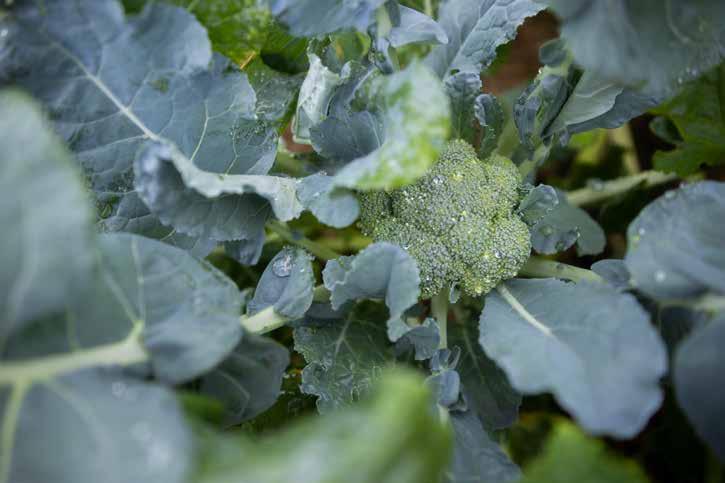
When consumers go to the grocery store, they want their produce, including broccoli, to look, feel and taste fresh. This desire compels University of Florida scientist Tie Liu to study ways to keep vegetables fresh.
In newly published research, Liu and his colleagues studied the physiological and molecular mechanisms of two treatments: 1-Methylcyclopropene (1-MCP) and controlled atmosphere (CA) storage. They found that these treatments delay the aging process in broccoli in different ways.
“Studying the molecular mechanisms of these treatments offers valuable insights into how we can improve vegetable preservation techniques, enhance food safety, and promote sustainability in the food industry,” said Liu, a UF/IFAS assistant professor of horticultural sciences and corresponding author of the study. “Those technologies are like superpowers for keeping vegetables and fruits fresh.”
Controlled atmosphere and 1-MCP both slow broccoli deterioration beyond what can be accomplished by low temperatures. While CA slows broccoli metabolism, 1-MCP makes it insensitive to ethylene, the plant hormone that controls stress responses and ripening.
“By controlling things like temperature, humidity and the levels of gases like oxygen, carbon dioxide, and ethylene, we can slow down the natural processes that cause food to spoil,” Liu said. “It’s like giving the vegetables a safe home, where they can stay fresh.”
The new UF/IFAS research will help scientists around the world preserve broccoli and other vegetables. It will also help plant breeders find the right genetics for fresher produce.
“The better we understand the genes that are turned on and off within the context of postharvest quality deterioration and loss of shelf life, the better we can target genes to either be turned on or off by gene-editing techniques,” Liu said. “Knowing this, vegetables such as broccoli will stand a better chance of being purchased and eaten rather than wasted.” As soon as broccoli comes off the plant, the clock starts ticking on its freshness.
Typically, broccoli is harvested when floral bunches reach full size but with the florets (immature flowers) still tightly closed, said Jeff Brecht, a UF/IFAS professor of horticultural sciences and co-author of the study. In previous research, Liu and Brecht showed harvesting prematurely triggers the onset of aging and deterioration.

“So, since the broccoli quickly switches from growing to deteriorating when it’s harvested, it’s very quickly taken from the field to a cooling facility and cooled to as close to 32 degrees as possible,” Liu said. “The low temperature slows the decline of the broccoli tissue.”
Everyone involved in getting the broccoli to the store tries to keep it chilled, a process produce handlers call the “cold chain.”
1.
2.
3.

4.
5.

Usually, chilled broccoli lasts about 30 days, but if the cold chain is broken, the broccoli can yellow in just a few days. “The reality is that once the cold chain is broken, even if the broccoli is returned to a low temperature, there’s no way to cool the product again,” Liu said.






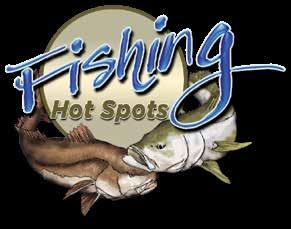


If you’re hot, the fish are hot!
Fishing during the summer can be brutal, but there are ways to combat the heat. Obviously, the water temperature is cooler in the mornings, so getting an early start is always a plus. I’m catching bait just as it’s getting light out so I can start fishing by 7:00 a.m. Some people like to fish at night when it’s cooler. Not me, I prefer to sleep at night!
Bridges:
Fish gravitate towards bridges for a multitude of reasons, but primarily for food. The shadow lines of all the bridges throughout Tampa Bay are loaded with baitfish. So, naturally, fish are going to hang around the bridges to feed, but also to stay cool. During major tide cycles the current flows fast under bridges and this tends to cool the water.
tarpon, and black drum if you’re using crab for bait. If you’re fishing the bridge adjacent to where it meets the shoreline, you can also expect to catch snook.
One tip for landing big fish on light tackle while fishing around bridges is to hook an anchor ball to your anchor line. Cobia and tarpon can be landed on relatively light tackle if you have the ability to quickly disconnect the anchor to go pursue the fish. Once you work the fish away from the bridge into the open bay, it’s just a matter of time before it is along the gunwale.
Another plus to fishing around bridges is that they provide shade. People with towers, or T-tops on their boats have somewhat limited access, but boats without them have free rein. They’re also a good place to dodge a passing shower, and still catch fish while doing so.

When fishing at the bay bridges, let the tidal flow do the work for you. If I’m fishing the center span or adjacent to the shoreline, I will spot lock my vessel and cast up current and let my bait drift through with the tide. If I’m anchored somewhere up current of the bridge, I will cast my bait parallel to the bridge and let it sit in the current until I get a bite. When using these methods, it’s important to nose hook your baits, so they make a natural presentation.
The one thing that I always do that most don’t is chum. Whether it is with live bait or fresh-cut bait, I am always chumming. If you don’t have a cutting board on your boat, get one. It will make a huge difference in the number of fish that you catch. Some species of fish you can expect to catch under the bridges are mangrove snapper, spotted seatrout, Spanish mackerel, jack crevalle, ladyfish, cobia,
If you’re strictly a snook and redfish angler and only like fishing the mangroves, you’ve got to start early. Besides that, you also need to be an accurate caster. Snook and redfish are under the mangroves, so you have to get your bait within a foot of the overhanging branches to even have a shot at catching one.
I like putting the bait under a cork and keeping the bail open after the cast while letting a little line off the spool at a time, so it tracks adjacent to the mangrove shoreline as the tide carries it by. As soon as a fish takes the cork under, I close the bail and reel up the slack for a solid hook set. It also helps to do some live bait chumming to get the action started. If after 10-15 minutes you’re not seeing fish chasing or eating the chum bait, it’s time to move on.
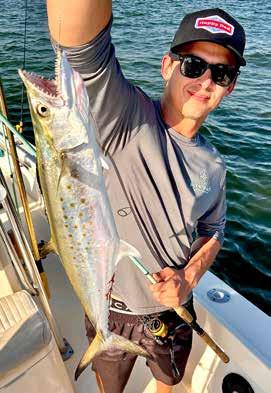

When choosing another spot, make sure there’s a good tidal flow at that location. If the tide isn’t moving, the fish most likely won’t be biting. Mangrove points and mangroves adjacent to passes usually have the fastest moving water and provide the most action.
Lately, I’ve found that by the time 11:00 a.m. rolls around the fishing around the mangroves slows way down. Now you have to ask yourself, do I call it a day, or do I head to one of the bridges and continue to fish?
In the summer when thunderstorms pop up about every afternoon, it’s important to start fishing early regardless of the tide and keep an eye on the sky.
Afishionado, “Always an Adventure.”

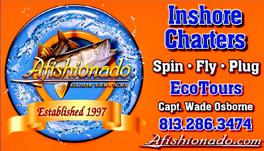
Tampa Bay fishing guide Wade Osborne of “Afishionado Guide Services” has been plying the waters of Tampa Bay as a professional full-time captain, since 1997. Osborne has been featured on numerous TV and radio shows and writes for multiple publications. Osborne offers inshore fishing charters on light tackle spin, fly or plug. He also offers eco-tours with an emphasis on photography. For more info visit Afishionado.com or find Afishionado Guide Services on Facebook and Instagram. Email: wade@afishionado.com Call/Text 813-286-3474





• Sheep have very good memories. They can remember at least 50 individual sheep and humans for years. They do this by using a similar neural process and part of the brain that humans use to remember.
• Sheep are known to self-medicate when they have some illnesses. They will eat specific plants when ill that can cure them.
• Sheep have a field of vision of around 300 degrees, allowing them to see behind themselves without having to turn their head.
• Their milk is used to produce gourmet cheeses.
• Wild sheep tend to be larger than domesticated species, the largest (Argali) being 1.2m tall. They also have longer horns which they use to defend themselves from predators.
• Cattle and sheep have what is known as a ‘ruminant’ stomach, consisting of four different chambers, each with a specified function.
• Like various other species including humans, sheep make different vocalizations to communicate different emotions. They also display and recognize emotion by facial expressions.

FAMILY OWNED AND OPERATED SINCE 1971

I have written several times in this column about how confusing the English language can be. The following thesis describes it perfectly.
We will begin with a box. The plural is boxes; but the plural of ox became oxen not oxes. One fowl is a goose, but two are called geese, yet the plural of moose should never be meese.
If the plural of man is always called men, why shouldn’t the plural of pan be called pen? If I spoke of my foot and show you my feet, and I give you a boot, would a pair be called beet? If one is a tooth and whole set are teeth, why shouldn’t the plural of booth be called beeth? We speak of a brother and also of brethren, but though we say mother, we never say methren.
To continue, I point out that a bandage was wound around the wound, and the farm was used to produce produce. The dump was so full that it had to refuse more refuse. In my home we had Polish furniture, and my mother asked me to polish the Polish furniture. Huh? While dove hunting I
shot one and the dove dove into the bushes. And a buck does funny things when the does are present. Confusing, eh?
In closing the thesis the student surmised that we have to marvel at the unique lunacy of a language in which our house can burn up as it burns down and an alarm goes off by going on.
We take English for granted. But if we explore its paradoxes, we find that quicksand can work slowly, boxing rings are square and a guinea pig is neither from Guinea nor is it a pig.
I heard a story of a parish priest being honored on the 25th anniversary of his arrival to the church he was serving. A leading local politician, who was a member of the congregation, was chosen to make the presentation and give a little speech at the dinner, but was delayed in traffic, so the priest decided to say his own few words while they waited. “You will understand,” he said, “the seal of the confessional can never be broken. However, I got my first impressions of the parish from the first con-
fession I heard here. I can only hint vaguely about this, but when I came here 25 years ago I thought I had been assigned to a terrible place. The very first man who entered my confessional told me how he had stolen a television set and when stopped by the police, had almost murdered the officer. Further, he told me he had stolen money from his parents, embezzled money from his place of business, fooled around on his wife and took illegal drugs.”
“I must say,” He said, “I was appalled. But as the days went on I knew that my people were not all like that, and I had, indeed come to a fine parish full of understanding and loving people.”
Just as the priest finished his talk, the politician arrived full of apologies for being late. He immediately began to make the presentation and give his talk. “I’ll never forget the first day our parish priest arrived,” said the politician. “In fact, I had the honor of being the first one to him in confession.”
When George Bush was president he went to Heathrow Airport in England. A red carpet was rolled out to Air Force One and the President strode to a warm but dignified handshake from the Queen. They rode in a 1934 Bentley to the edge of central London where they climbed in to an open 17th century coach hitched to six magnificent white horses. As they rode toward Buckingham Palace, each waving to the thousands of cheering people lining the streets, all was going well. This was indeed a glorious display of pageantry and dignity. Suddenly the scene was shattered when the right rear horse let rip the most horrendous, earth-shattering, eye-smarting blast of flatulence and the coach immediately filled with noxious fumes.
Uncomfortable, yet maintaining control, the two dignitaries did their best to ignore the whole incident, but then the Queen decided that was a ridiculous manner with which to handle a most embarrassing situation.
She turned to President Bush and explained, “Mr. President, please accept my regrets. I am sure you understand that there are some things even a Queen cannot control.” The President, ever the gentleman, replied, “Your Majesty, please don’t give the matter another thought. You know, if you hadn’t said something I would have assumed it was one of the horses.”


Food is the most common material sent to landfills, comprising 24.1 percent of municipal solid waste in the United States, according to the U.S. Environmental Protection Agency (EPA). When yard trimmings, wood and paper/paperboard are added to food, these organic materials make up 51.4 percent of municipal solid waste in landfills.
The EPA has also determined landfills annually contribute up to 14 percent of methane emissions, a greenhouse gas, and a major contributor to global warming.
The University of Florida Institute of Food and Agricultural Sciences (UF/IFAS) is committed to finding alternatives that will encourage Florida residents and businesses to steer food waste, grass clippings, and more organics away from landfills by compositing these items. UF/IFAS Extension agents, scientists, and administrators joined with compost industry professionals and organizations, federal and state sustainability officers, policymakers, and funding organizations to establish the UF/IFAS Compost Consortium.
The Consortium recently hosted its initial conference at the UF/IFAS Gulf Coast Research and Education Center (GCREC) to involve Florida’s city, county, and state decision makers; agriculture and horticulture producers, and compost industry services to develop science-based standards and a Florida compost model to divert the effects of landfills and to eliminate continued dependence on them.
The goal is to collaborate with the Florida Composting Council to explore economic, policy and environmental research needs for compost. Other efforts to explore include developing incentives to improve capacities for industry partners to guide and assist municipalities in implementing robust environmentally viable and resourceful compost programs. The conference attracted nearly 100 attendees from across Florida.
“This was also an opportunity to introduce UF faculty and Extension agents that are on the forefront of research in this field to the industry, policymakers, and stakeholders that are involved in some aspect of composting in Florida,” said Dr. Mica McMillan, an Environmental Horticulture assistant professor at the UF Fort Lauderdale Research and Education Center (FLREC) and co-chair of the symposium.
Following a morning session of presentations by industry rep-
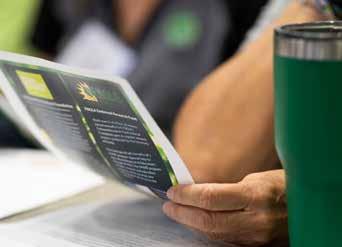
resentatives regarding the vision and challenges for compost use in Florida, a review of current grant funding resources, and brief talks by researchers, Extension agents, industry experts, and governmental agents, the attendees gathered in roundtable discussions regarding economics, policy, and environmental initiative groups.
The roundtable groups focused on strengths, weaknesses, opportunities, and threats (SWOT) within each category. Economic strengths included a waste management alternative with less environmental impact than landfilling or incineration; positive environmental impacts; waste reductions, a cost-saving waste management option, and fostering a culture of sustainability. Weaknesses included costs of processing and hauling, needed for continued monitoring of the compost process; efficiency of process management; need for increased time and resources; negative impacts of compost mislabeling; process change requirements; permitting of facilities; sharing of research findings and application study results; need for properly educating composters and users and recognition of longer time needed for positive impacts of compost on plant growth compared to use of fertilizers, pesticides, and herbicides. Opportunities cited included acrossthe-board education for all market segments; potential for growth in compost production and utilization; community building, overall sustainability desired by new homesteaders; work with local governments and state agencies such as the Florida Department of Transportation and Florida Department of Agriculture and Consumer Services; lowering of energy costs through compost use; food waste diversion; methane reduction; equipment manufacturers and improvements to Florida’s sandy soils through compost use.
Economic threats included hurricanes and the resulting large volumes of woody materials often mislabeled as compost; plastics; greenwashing of lower grade biodegradable plastics; distinguishing between high-quality biodegradable plastics and poor-quality biodegradable plastic; contaminants; weed seeds and pests.
Policy strengths identified by roundtable members included the role UF/IFAS Extension has in educating compost bin recipients; the statewide Extension network where some agents are already working with the compost industry or community composting initiatives; the revision to Rule 62709, allowing facilities to register rather than have permits and the existence of the Florida Compost Council legislative committee.

Policy weaknesses included the need for use of the U.S. Compost Council (USCC) definition of compost as the statewide standard; compost producer familiarization with end user needs; end user knowledge of which compost best fits their needs and better working relationships between agricultural producers and compost facilities.
Key Policy opportunities identified included the creation of an infographic by researchers on the economic and environmental benefits of compost and the need for researchers to update previously conducted research.
The groups’ threats included non-use of the USCC compost definition at all times; Not-in-my-backyard (NMBY) mindset; absence of comment on Florida Department of Environmental Protection (FDEP) Rule 62709; need for FDEP Rule 62701 needs to define food waste as recoverable and add a definition of recoverable materials and not making Seal of Testing Assurance STA mandatory by local governments.
Roundtable participants listed the following initiatives as strengths: increase water capacity at certain rates; increase

nutritional capacity and improved nutrient holding; increase carbon and organic matter; Organic Material Review Institute (OMRI) certification; and Foundation of Compost Research in Florida (FORCE) as a good resource.
Key Initiative weaknesses included leaching information on compost phosphorus and nitrogen content, the need for additional carbon sequestration data; a local source (s) for quality control; lower cost soil testing; universal labeling; lack of state funding for trials, and lack of education for growers, master gardeners and homeowners.
Noteworthy opportunities included an accredited Floridabased nutrient analysis facility; a USCC-certified testing resource in Florida; a compost soil analysis resource for each user industry and the need for growers and compost producers to meet and develop relationships.
For additional information, contact McMillan (mica.mcmillan@ufl.edu), Liz Felter (lfelter@ufl.edu) or Chris Snow (Chris. Snow@veranza.com).

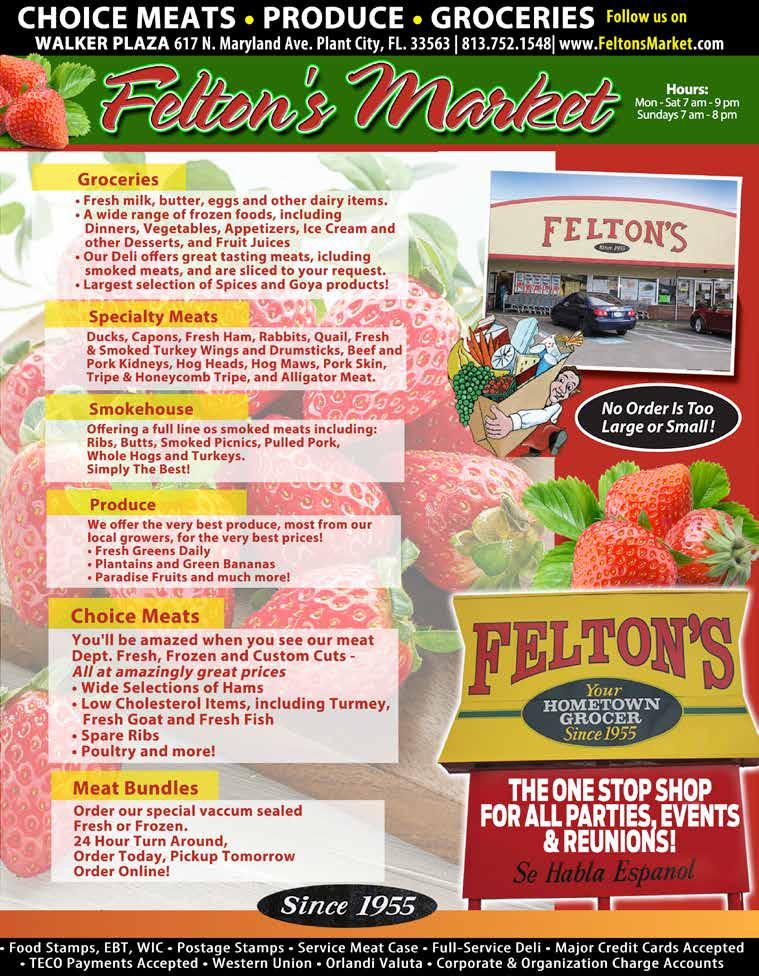


Hurricane season started June 1. The time to put your hurricane preparation plan together is now! This way you can minimize issues during and after the storm.
An important first step is to walk around your house, lanai, porch, and landscape. Identify what can become flying objects in strong winds, think about flowerpots, bird feeders, lawn furniture, plant hangers, garden hoses, metal yard art, and much more.
The second step can be to implement your ‘relocation’ strategy. What items can be relocated to your garage, storage shed, inside your home, or possibly under or behind shrubs near your house? If you have potted plants on your front porch, you could lay them down horizontally behind the shrubs close to the house. If you stand the pots upright, they will fill with rainwater that, over a few days, could damage the plant. Now that you have identified what can be moved, start the relocation process. It may take more time than you anticipate, so starting sooner than later is better.
Purchasing materials you need to protect your home is the third step. If you have several doors on your lanai, consider purchasing large sections of heavy-duty plastic and bags of mulch to absorb rainwater. Duct tape the heavy-duty plastic to your sliding glass and other doors, leaving space if there is a drain by the doors. You do not want to cover the drain. Place the bags of mulch on top of the plastic. Even though the mulch is in a bag, it can absorb rainwater. If you have a drain between the screened lanai and covered area, stack bags of mulch on the house side of the drain. The benefit of using bags of mulch versus sandbags is that you can reuse the mulch in your landscape beds after hurricane season.
Another important detail, is to remove dead trees and branches. If you are not able to do that yourself, hire an arborist to evaluate the situation and make recommendations. Safety first!
If you have a debris pile, put the yard waste in garbage cans for weekly pick-up. Act now so your landscape debris is not at the end of your driveway when high winds arrive. A pile of debris can also end up in the stormwater drain, which can become clogged.
Keep an eye on the water level in your swimming pool. If the water level is above the recommended level, drain water to the recommended level. Be safe!



THURSDAY

Check-in
7:30 a.m. - 8:30 a.m.
Learning Expo
8:00 a.m. - 9:55 a.m.
Class Rotations & lunch
10:00 a.m. - 2:00 p.m.
Location:
3401 Experiment Station Ona, FL
Ultrasound Technology to Assess Carcass Quality
Artificial Intelligence and Robotics for Pest Control
Invasive Reptiles in Florida
Fetal Development of the Beef Calf & Cow Nutrition: Is Supplementation Profitable?
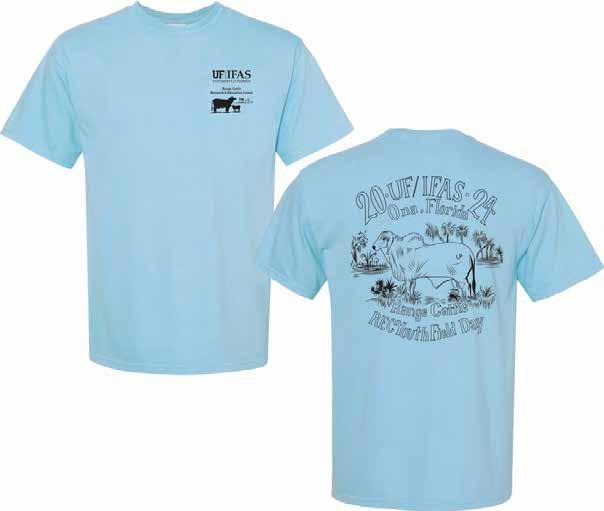
From Sand to Clay: Evaluating Soil Textures
Students, ages 8 and up, parents, & youth leaders, are invited to attend! The goal of this event is to excite students about agriculture and science, reveal future opportunities in those fields, and foster a love of learning which will promote agriculture and good stewardship in this and future generations. Register by 6/6 to pre-order a t-shirt!
Questions?
Call 863-735-1001 or ona@ifas.ufl.edu

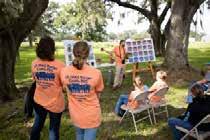

For more information & to register visit:
https://rcrec-2024yfd.eventbrite.com April 15-June 6: $15 June 7 - June 25: $20



 By Brad Buck
By Brad Buck
A veteran himself, University of Florida plant pathologist Gary Vallad wanted to give back to his comrades-in-arms. So, he and Simon Bollin started the Veterans Florida Agriculture Program (VFAP), which helps train veterans for jobs in that field. In 2017, Bollin, agribusiness development manager for UF/ IFAS Extension Hillsborough County, contacted Vallad. What started at the Gulf Coast Research and Education Center (GCREC) is now a statewide program.
“I couldn’t say no. The opportunity just made sense,” said Vallad, a faculty member at the GCREC, also in Hillsborough County. “As a former member of the Army National Guard, I leaped at the opportunity to give back to a cherished part of my past. My relationship with the countless veterans and active military personnel I’ve had the pleasure of working with has been one of my greatest personal rewards.”
For his work with VFAP, Vallad has been selected for the 2023 USDA-NIFA Partnership Award for Mission Integration or Research, Education or Extension. He received the award on May 15.
More than 110 veterans have graduated from the program, all have had job offers in agriculture and 85% have accepted a career in agriculture.
“Gary and I developed the program, and since then, he has promoted it within UF/IFAS and managed the interns at GCREC,” Bollin said. “This is probably one of the most successful veteran transition programs in the country and definitely within agriculture.”
The program started with Michael Burrell who, after retiring from a 28-year career in the U.S. Air Force, was given handson training in agriculture at GCREC. After graduating from the GCREC program, Burrell took a job as an intern at Farm Credit of Central Florida.
VFAP is a six-month program, with veterans rotating through the various research programs. Vallad set up the rotations at GCREC with the center’s scientists. Bollin and Amy Dudley, project director at Veterans Florida, work with local veteran groups to find candidates and industry partners for the veterans to work post internship.
Vallad and Bollin partnered with Dudley because that group already had the resources and connections to take VFAP to the state level. From there, they got a USDA grant to train veterans.
Vallad administered the award through UF/IFAS, which let the veterans group take the program to RECs statewide – from Milton to Homestead.
The West Florida REC in Milton – near Pensacola -- and GCREC, near Tampa -- are the busiest sites for the program. Bollin attributes their high enrollments to each center’s close proximity to large military installations and excellent on-site management.
In addition to expanding across the state, VFAP now includes active-duty service members by working with the Department of Defense SkillBridge program.
“This doubled the amount of military personnel served per year and is recognized in all 50 states and globally as a unique opportunity in agriculture for transitioning service members,” according to the NIFA award nomination form submitted by Dudley.
Currently, VFAP is limited to active military members through SkillBridge, although the program is actively looking for sources to fund veterans, Vallad said.
“(The program) is something I want to keep going and hopefully find additional opportunities with the planned Center for

Artificial Intelligence in Agriculture at GCREC,” Vallad said. Most programs that help transition veterans to careers in agriculture try to help them land jobs in production agriculture, Bollin said.
“Although a noble cause, production agriculture is a risky business and with no land, no equipment, little money or experience in agriculture, it was making a difficult task almost impossible for these veterans,” he said. “So, Gary and I developed a hands-on, paid, rapid, and diverse internship program at GCREC that would get veterans up to speed on agricultural practices so they could successfully transition to a career in agriculture.”
If they wanted to eventually get into production agriculture, the veterans would have the agricultural experience, local resources, and a steady income to make a successful transition into farming.

“VFAP has been an amazing success, not only from an employer perspective but also in veteran career development and in offering veterans a career with purpose and community,” Bollin said. “VFAP participants are successfully transitioning from a career providing national security to a career providing food security.”
The mission of the University of Florida Institute of Food and Agricultural Sciences (UF/IFAS) is to develop knowledge relevant to agricultural, human and natural resources and to make that knowledge available to sustain and enhance the quality of human life. With more than a dozen research facilities, 67 county Extension offices, and award-winning students and faculty in the UF College of Agricultural and Life Sciences, UF/IFAS brings science-based solutions to the state’s agricultural and natural resources industries, and all Florida residents. ifas.ufl.edu | @UF_IFAS

With
every generation, we get better at protecting our environment.
Reclamation ecologists like Ashlee work to return mined lands to productive use as wildlife habitats, public parks and more—so future generations can enjoy these lands for years to come.

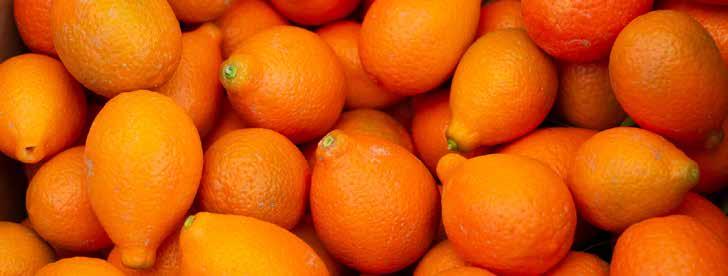
Florida is well known for its citrus---oranges, grapefruit, and tangerines, lesser known are mandarinquats, a unique citrus fruit that is a combination of mandarins and kumquats. This small, orange-colored, teardrop-shaped fruit is roughly twice the size of a kumquat. The entire fruit, including the peel, is edible. The flesh is slightly tart while the peel is sweet, lending a balanced, unique sweet-tart flavor. They can be enjoyed whole, sliced, mixed into desserts, candied, or pureed. Mandarinquats are grown around the world, including in the United States, China, Japan, and South Africa. In the U.S., mandarinquats are grown mainly in Florida and Alabama.
Like oranges and other citrus, Florida mandarinquats are very nutritious and high in vitamin C and fiber and low in calories. One serving of mandarinquat (100 g) contains 71 calories, 2 g protein, 1 g fat, 16 g carbohydrate, and 6.5 g of dietary fiber. It also provides 73% of the Daily Recommended Value (%DV) for vitamin C, 26% for dietary fiber, 7% for manganese, 6% for vitamin A and calcium, and 5% for potassium, magnesium, riboflavin, iron, and copper. Mandarinquats also contain other nutrients including vitamin B6, folate, thiamin, omega 3 fatty acids, and phosphorus.
Fresh mandarinquats are a fantastic way to get your vitamin C for the day. One serving provides most of your daily needs. Vitamin C is important for a healthy immune system, cancer prevention, healthy blood circulation and wound healing. This vitamin acts as a potent antioxidant in the body, neutralizing harmful free radicals and preventing its damaging effects in cells. By fighting cell and tissue damage, vitamin C protects against cancer and other diseases, such as the common cold. This vitamin also helps the body absorb more iron and aids in the development of strong bones and teeth.
Current research findings support that vitamin C’s benefits come from the consumption of whole fruits and vegetables. A high intake of produce is associated with a reduced risk of death from all causes, including heart disease, stroke, and cancer. Taking supplements does not seem to provide the same protective benefits as eating the actual kumquat or consuming the juice.
Mandarinquats and other citrus fruits contain a significant amount of dietary fiber, with one 100-gram serving meeting
over a quarter of your daily fiber requirement. Fiber can help lower cholesterol, which helps to prevent atherosclerosis. It also assists with digestion and is well-known for preventing and treating constipation. According to the American Institute for Cancer Research, a diet high in fiber may decrease the risk of several types of cancer including colon, rectum, breast, and pancreas.
Fiber can also help maintain steady blood sugar levels, as can fructose, the naturally occurring type of fruit sugar found in kumquats and other citrus fruits. Mandarinquats also contain pectin, a water-soluble fiber that helps reduce blood cholesterol levels and aids in satiety.
Look for fresh mandarinquats that are brightly, uniformly colored, and free of wrinkles or discolored spots. Lightly squeeze to feel the firmness and pick those that are firm, bouncy, and heavy for their size. Avoid those that are soft or mushy. They can be stored at room temperature for several days or refrigerated in a plastic bag for up to two weeks.
Mandarinquats are delicious eaten out of hand---peel, flesh, seeds, and all! The peel can also be zested and used to season vegetables and meat. Use it as an edible garnish for drinks, appetizers, and platters.
Other ways to enjoy this fruit include:
• Toss sliced mandarinquats into a fruit or veggie salad.
• Squeeze the juice into a pan, allow it to thicken over heat, and use it as a sauce for fish or chicken.
• Add mandarinquat juice to baked goods or icing for a bright refreshing twist.
• Slip a few slices of mandarinquat into a pitcher of water for a refreshing low-calorie beverage.
• Add slices to your hot tea.
• Dice mandarinquats and used in salsa and chutney.
• Juice and make into jam.
Enjoy sweet, juicy Florida mandarinquats today and get plenty of vitamins and minerals in these unique citrus fruits.
http://edis.ifas.ufl.edu/ http://sarasota.ifas.ufl.edu/ http://www.whfoods.com
 By Michelle Caceres
By Michelle Caceres

Bob “Coach” Henriquez, CFA, Hillsborough County Property Appraiser (HCPA), and his staff, like to talk about property valuation with his constituents. After all, his job is to assess all property within the county as of Jan. 1 of each year. That sounds simple, but when you consider the hundreds of thousands of individual parcels, including residential, agricultural, multifamily, commercial and industrial properties, that’s no small feat.
He’s quick to point out, however, that his office does not collect taxes or determine tax rates, that’s the job of the Hillsborough County Tax Collector and various taxing authorities, respectively.
“We don’t raise or lower taxes and we can’t overvalue or undervalue property,” he said. “We’re regulated by the Department of Revenue and our goal is to be accessible, accountable, and transparent.”
In addition to assessing property, HCPA also processes allowable homestead exemptions and agricultural classification applications, a job Henriquez said he addresses in a proactive manner. “We’re not here to be adversarial, we’re here to serve the property owners in Hillsborough County,” he said.
One significant advantage available to agricultural landowners is the Florida Greenbelt Law, which was created in 1959 and offers property tax relief, sometimes by as much as 90 percent, by assessing agricultural land based on its use value, not its potential market value, which has skyrocketed in the last decade.
“You can’t underestimate the economic impact of agriculture in the state of Florida, not everybody wants to visit Mickey Mouse but everybody has to eat,” said Henriquez. “If you didn’t have greenbelt as an incentive to help and encourage people to continue to produce agricultural products in the state then more landowners would look to see their property for other uses. That’s not a recipe for sustainable economic viability for the state of Florida.”
His office is working to take any mystery out of the greenbelt application process, from initial filing to sending postcards to new landowners who need to reapply to keep the Greenbelt classification.
The Hillsborough County Property Appraiser has four offices throughout the county, including a Plant City office located at 307 N. Michigan Ave., Floor 2. To learn more about the Ag-
ricultural “Greenbelt” Land Classification visit www.hcpafl.org or call (813) 272-6100.
1) What is Agricultural “Greenbelt” Classification? Agricultural, or “Greenbelt,” is a classification of different types of agricultural property, such as citrus groves, pasture, cropland, and nurseries. The Agricultural “Greenbelt” Classification is a benefit that provides a lower assessment (value in use not market value) to farmers in order that they may continue to commercially farm their land.
2) Who qualifies for Agricultural “Greenbelt” Classification? To qualify for an Agricultural Classification the property must primarily be used for “Bona Fide” Agricultural Purposes, which means “Good Faith Commercial Agricultural use of the Land.”
3) Is there a minimum land size requirement to qualify? Hillsborough County doesn’t have a minimum size requirement to qualify for the agricultural classification but the parcel must be large enough to sustain a commercial operation. Hobby farms or farms that grow produce/raise livestock for personal use do not qualify.
4) Can I apply for Agricultural “Greenbelt” Classification if my property is being leased?
If the property is leased, the lease must be in effect as of January 1. A current copy of the lease must accompany the application. The property owner is responsible to make sure the lessee is utilizing the property, has a commercial agricultural operation, and is willing to provide financial information regarding their operation.
5) How do you apply for an Agricultural “Greenbelt” Classification?
The process starts by a property owner filing an agricultural application (DR-482). The application can be downloaded at www.hcpafl.org. There is no application fee to file. Once an application is filed, either online or at one of the property appraiser’s office locations, the property is inspected either physically or through aerial photography to determine if the property rises to the level of being a commercial agricultural operation. Some of the factors in determining if a property qualifies for the greenbelt classification are: expectation of making a profit, common agricultural practices, income and expense statements, tax returns (Schedule-F’s), receipts, and business plans.
6) Do I need to renew it annually?
No, if the application is granted, the Agricultural “Greenbelt” Classification will automatically renew pending an annual inspection. Properties granted the classification are assessed based on the potential income of the commodities being produced. Only areas actually utilized for the agricultural operation shall qualify.
7) What happens if there’s a change of ownership?

Any type of ownership change will require a new Greenbelt application for the following year.
8) If my zoning changes, does this affect my Greenbelt? No, as long as the new zoning doesn’t prohibit agricultural uses.
9) What happens if I build a house on the property?
Any homesite area or portion of the property not used as part of the operation will be assessed at market value.
10) What can I do if I apply and am denied?

If the application is denied, the owner is notified via certified denial letter and given the opportunity to provide additional information regarding the agricultural operation. If after additional information is reviewed and the property remains denied, the property owner may file a petition with the Value Adjustment Board challenging the Property Appraiser’s decision.
11) What happens if I lost my Greenbelt? Can I reapply next year?
Yes, every year stands on its own.
12) How does the Agricultural “Greenbelt” Classification affect my Amendment 10?
Property that is homesteaded falls under the Amendment 10 by provision which does not allow the assessed value of the property to increase greater than three percent in any given year, unless improvements are made to the property. Any area of the property and any buildings being used for the greenbelt operation do not fall under the Amendment 10 cap, and if the property is denied Agricultural “Greenbelt” Classification, the land and buildings associated with the greenbelt will automatically go up to 100% of market value for that tax year.
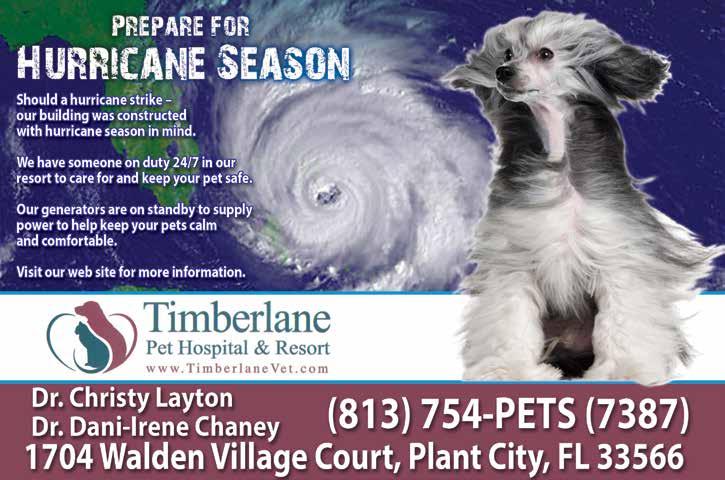

Father’s Day is Sunday, June 16th. Traditionally, many purchase clothing, event tickets, lawn and landscape items, like lawnmowers, rakes, shovels, plants, and include a breakfast, lunch, or dinner outing. It may be too late for reservations now, so if food is to be your gift, book the restaurant as soon as possible.
If you are interested in a few out of the ordinary and other standing tradition suggestions, read on.
Let’s think about the curb appeal of your father’s home and landscape. Do shrubs block the front of his home? If yes, you could prune them to a more attractive and manageable height. Labor does count as a gift.
If your father’s landscape doesn’t have flowering shrubs, you could purchase and install shrubs that do well in our area, Southwest Florida. Consider Sweet Almond Bush, Aloysia virgata, a large, non-native that attracts butterflies and has white, fragrant flowers from summer through fall. Beautyberry, Callicarpa americana, is a lovely, large native shrub, that produces small purplish fruits for wildlife in late winter.
If your father lives in an apartment and likes houseplants, consider African Violets. I have several in my office, and most are in bloom now. They are easy to care for and do not like
to be overwatered. Stop by your local nursery or big box store. Both have good selections. Note that flowering plants last longer than cut flowers.
If your father has a patio, lanai, or deck, note that potted plants work very well. If the patio is openair, you can add potted plants, plants in the ground, or a combination of both. Does your father have a favorite color? If yes, purchase plants with that flower color.

Be sure to water the plants, and don’t plant too deeply. Sun loving plants should be planted in the sun and shade-loving plants in the shade. Generally, there are tags in or on the plants that provide this information. If not, you can send an email and photo to your Extension office who can help you identify the plant so he will know the plant requirements.
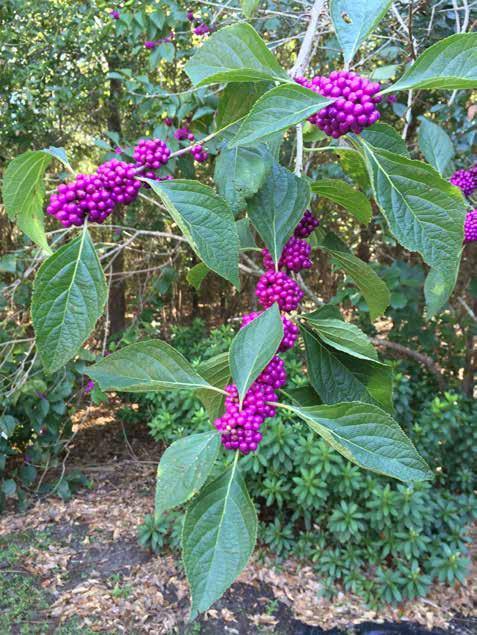
Who doesn’t love birds? What about a birdbath or birdfeeder that he can see from his favorite window? Don’t forget the birdseed!
Take your father to a local botanical garden. Strolling through plants is wonderful because you are outside, communing with nature, and you may even make new friends.
You register him or both of you to attend our workshops together – compost, microirrigation, rainwater harvesting, and more. That way you can learn something new and walk through our Bette S. Walker Discovery Garden in the courtyard of our office.
If he hasn’t seen some of his friends lately, you could ask them to stop by and visit with him and you or take him to visit them.
For more information, please contact your local Extension Office and view their Calendar of Events. Please see our Hillsborough County calendar of events at: https:// www.eventbrite.com/o/ufifas-hillsborough-extension-8606873308 and scroll down to view upcoming programs for the triple workshops and many others. Hope your Father’s Day is wonderful.
Lynn Barber is the Florida-Friendly Landscaping TM agent for UF/IFAS Extension Hillsborough County. Contact her at labarber@ufl.edu.



For many, the name “Parkesdale” conjures up images of delicious strawberry shortcake and other treats available at the family’s farm/market in Plant City. That all began in 1956, when the family relocated to Plant City from Pennsylvania, and continues today.
“My great grandfather and grandfather started it all with 10 acres,” said Matt Parke, a fourth-generation member of the family who serves as Vice President and Director of Operations of both Parkesdale Farms and Parkesdale Packing and Cooling. He and his wife, Kandice, also own and operate Berry Sweet Acres on U.S. 92 in Dover.
The initial Parkesdale Farm was 10 acres at a time when a five-acre farm was considered huge. “My great grandfather was called a ‘Crazy Yankee’ by many local growers who thought he wouldn’t be able to make it with a farm of that size, but he did and added another 10 acres the following year.” The farm now comprises some 300 acres along with a packing and cooling operation.
In addition to strawberries, Parkesdale Farms grows beans, peppers, onions, peas, artichokes, and more. “We are in the process of limiting our crops to strawberries, blueberries, blackberries, and raspberries over the near term,” said Parke. “Our berries have a great operation and offer us seasonality with less volatile markets.”
Parke maintains a watchful eye on all aspects that impact his operation, making adjustments when needed to assure the family’ long term future. “Mother Nature is always a factor regardless of the crop or season, and there’s nothing we can do to control her,” he noted. “But we monitor the varied costs that impact us and other factors such as labor, market conditions, shipping, new crops, and varieties. It looks at this time like berries are the best choice for us going forward based on our quality, expertise, and the loyalty of our berry customers.” Many area growers have decided to either sell their land or move elsewhere in light of the ongoing challenges they face, but Parke considers farming a lifestyle that he and his family love and will not give up. “We are not going anywhere,” he emphasized.
While focusing much of his attention on Parkesdale Farms, Parke and his wife, Kandice, have ventured into agri-tourism through their Berry Sweet Acres operation on U. S. 92, west of Plant City and close to Parkesdale Farms. “We grow berries and flowers there and offer upick year-round,” said Parke. “I never thought we’d be involved in Upick throughout the season, but we are and the results have been very surprising in many ways, from being slammed with customers to bringing back memories of my childhood growing up on a farm and enjoying all that had to offer.

“It’s great to see these youngsters enjoy their introduction to agriculture. Having families pick their own berries and vegetables also provides us with an opportunity to answer any questions they may have about our farm while giving them a chance to personally pick their own food at attractive prices. That’s an added bonus,” he said. “I feel it’s important for us to actively educate non-farmers about our industry, its challenges and opportunities. That helps them appreciate what we do and how they benefit.”
“Kandice and I looked at the interest in the Upick operation and decided to add what we call a ‘barntique’ two years ago,” said Parke. A barntique is a barn-like agricultural version of a boutique. “We offer our visitors an increasing range of items both at the barntique and online throughout the year.
Kandice manages the Berry Sweet office and also serves as a Broker Associate with Coldwell Banker Realty.
Matt and Kandice have three daughters: Sara, 16; Shanna,2, and Shelbie, who is four months old. “Sara and Shanna love to spend time at our Upick operation,” said Matt. “Sara is active in FFA and has plans to open her own online boutique in the near future.”
More information on the Upick and barntique is available by visiting Berry Sweet Acres on Facebook. You may also call at 813/441-4993 or visit the farm at 5631 U.S 92 West. Plant City, FL 33566.
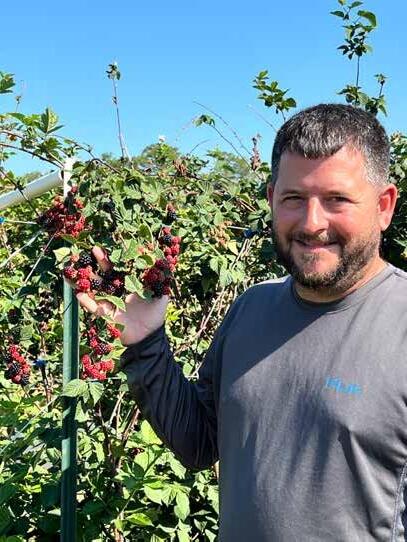

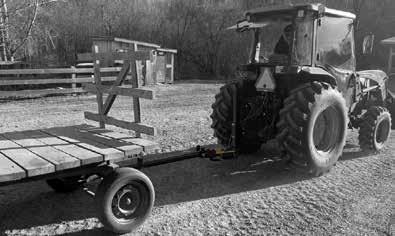





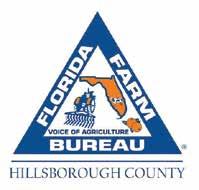
BOARDOFDIRECTORS
Dennis Carlton Jr, President; Casey Runkles, Vice-President; Clay Joyner, Treasurer; Madison Astin Salter, Secretary; John Bertram, Carl Bauman, Jake Cremer, Brittany Coleman, Travis Council, Tiffany Dale, Drew Futch, Tommy Hubble, Steve Neely, Jim Romkey, Brian Shoop, Michelle Williamson Kaylee Poppell - Executive Director
 by John Dicks
by John Dicks
If you’re like me, odds are good that you’re quite happy that summer is upon us!
Hot, muggy, sticky with humidity, with a wind that warms you rather than cools you off; what more could anyone really ask for to put a smile on your face?
Well, that certainly does give credence to the notion, enjoyed by many around here, that when June rolls around, it’s time to start heading to the mountains. Blissfully content to wake up each morning to temperatures still clinging to the 60º mark does bode well for a delightful summer.
Still, for those of us who have lived here all our lives, there’s something special lingering in the brain about long, and sometimes lazy, Florida summers. Strolling the beach early mornings at sunrise just ain’t a bad way to get going!
Florida, the Sunshine State, is most appropriately named and special in that way of its greetings. Doubling the dose of sunloving wonder, it starts with a vivid salutation in the morning, yet also shares much to enjoy with a splendid sunset slipping, and radiating into the water. Still, the real beauty of it all is that for those so determined the entire arc of the sun can be enjoyed all in the very same day.
Probably we take it for granted that Florida is a rather skinny peninsula, hanging south, down from the rest of the country. At its most narrow path, it’s only about 130 miles from allowing you to dip your toes in the Atlantic as the sunrise “bips” upwards from the horizon, yet leaving, at least during the summer months, plenty of time to race across the state, and say goodnight while catching it slipping away into the Gulf.
Years ago, when I was a Gator studying in Gainesville (well, that’s what I called it anyway), my favorite diversion was to meet up with a friend about 4:30 in the morning to leave campus for a 90-minute drive east to Crescent Beach. Time it right and we’d be driving on the

beach (yes, you could do that) just as the inky blue sky was turning into the golden hour of dawn.
The sun put forth a welcoming show, and it almost seemed to recognize that we were set to hang together throughout the day. As it lifted into the sky, we climbed into the car and followed its path. High noon was back in Gainesville, but our journey continued onward towards Cedar Key where we arrived amply early to savor the setting sun and bid it adieu as it dipped with radiance into the glistening Gulf of Mexico.
Such a memorable outing, which I did a bunch of times, deservedly needed a special name. I coined it the, Bip to Dip Trip, and really, where else but in Florida could you have such an amazing day?
There are, I suppose, a few other places you could enjoy a Bip to Dip Trip, but even in Hawaii, surely there are none as special, and warm, as Florida summers can make it.
As for the here and now, the journey is still doable, though admittedly the price of gas is a tad bit higher than the 25¢ per gallon I was paying way back when.
Closer to home, you could repeat the adventure from Daytona Beach to Clearwater Beach. It’s a bit further, and you have all that Disney traffic to deal with, but I guess with good fortune we could make it through all in a day!
Then, too, there’s plenty of other wonderful ways to suffer through the summer, including telling would be visitors just how bad it is here and that they should just really stay up north! Well, yes, I’m only kidding about that (maybe). We do, after all, know how really great Florida summers are, even with the annual influx of vacationers.
In the summertime, there’s always enough to make things splendid for those who love being outdoors. Enjoy every minute of it. I certainly will!
John Dicks is both a Lawyer and Businessman, including an interest in farming. He and his family have owned a Blueberry Farm and have Agricultural lands which they lease for cattle operations, as John says, “to someone who knows and handles cattle much better than I do!”. John is both a Gator, having received his undergraduate degree from the University of Florida, and a Seminole, with his Law Degree from Florida State University. John serves as Of Counsel to Trinkle Redman, a law firm in Plant City where he also served nine years as City Commissioner, including three terms as Mayor.


When you do business with Farm Credit, you are a member of a cooperative. When we do well, you do well. And we’ve been doing well for over 100 years.
Refinancing Buildings Fences Equipment
Loans for land, homes & living.
Wine corks are one of those things many people love to keep whether they have something to do with them or not. They have lots of personality, and if you emptied the bottle yourself, each one has a story. They are naturally waterproof and have an elegant simplicity. I do not typically collect wine corks but had a small stash of them and thought I would do something with them. I saw a cool wine bottle made of cut up corks and took the idea my own direction by making a shadow box to frame the cork bottle. I went into this project with no conceived notions and just let it evolve with the materials I happen to have laying around the house.
Wine Corks
Scrap Wood
Scrap Fabric
Wood Glue
Glue for Cork (gorilla glue,2 part epoxy, fabric glue)
Wax Paper
Finishing Nails
Stone Texture Spray Paint
Prepare the wine corks for cutting:
In a vegetable steamer, bring water to a full boil, steam the wine corks for 10 minutes. Steaming the cork will return them to their original shape and sterilize them Cut the corks with a serrated knife. Let the knife do the work, do not press hard or the cork will crumble.

Cut wood scraps (Back and 4 sides to a desired size, enough to frame your cork bottle.) Coat the back of the shadow box with wood glue and glue fabric to the top and sides of the wood. It helps to clamp the fabric with a scrap piece of wood and wax paper while the glue dries. The wax paper will prevent the wood glue from sticking to the scrap wood as it penetrates the fabric and dries.
Nail four narrow strips of wood together with finishing nails to construct a rectangular frame, this will be the “shadow” portion of the box so the finished outside diameter should match the back of the shadow box. Paint the shadow box frame with a paint of your choice (I used stone texture paint) * leave the bottom of the rectangular frame unpainted, we will later glue this frame to the cloth covered shadow box back * Glue the rectangular frame to the finished backing (the one covered in fabric).
If the cork did not cut clean, lightly sand the flat edge of the cork so there is an even surface to glue to the shadow box. Lay out the cork design for composition making sure it looks good in the frame (leave room for embellishment if desired).
Glue the flat edge of the cork pieces to the fabric within the rectangular frame of the shadowbox. I used 2-part epoxy to glue the cork. Gorilla Glue works, too. Fabric glue works okay, but not as well. Finish by nailing a hanging bracket on to the back side and hang it on the wall.

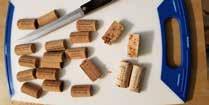


Part of the fun, well most of the fun of being outdoors and hiking is getting the chance to see the beauty of nature. If you’re lucky you’ll get a chance to see some strange creatures that you never knew existed. This month we will take a closer look at a wildly strange caterpillar. The caterpillar we have in mind is known as the slug caterpillar or the hag moth caterpillar. Often, that of which we know least about strikes the most fear within us. The slug moth is one of our indigenous species that have the misfortune of being misunderstood and typically feared; in fact, it’s genus name (Phobetron) originates from several ancient root words that mean “Fear,” for example; from the French (phobe), the Latin (phobus) and the Greek (Phobos). Whether or not this species should be feared remains unclear as many authoritative sources have published conflicting data on the subject. One thing for sure is that the relatively rare encounter with this caterpillar will not be forgotten and if you take a closer look, may inspire more fascination than fear.
The hag moth is the common name for one of about 1000 described species within the family Limacodidae, often called slug moths for the caterpillar’s resemblance to a slug, or cup moths to describe the shape of their cocoon, this insects caterpillar has put it on the chart of cool bugs. The adult moths are interesting example of Batesian mimicry, which means they mimic, or pretend to be an insect that some predators would avoid, in this case, the moth mimics a bee and even has fur on it’s hind legs that look like balls of pollen. The hag moth (Phobetron pithecium) however, gets its common name from the haggardly appearance of its caterpillar stage. These caterpillars look like no other and it is yet another example of mimicry. The caterpillar grows to less than an inch long and is covered in brownish setae that resembles short hair. Along the side of the caterpillar’s body grow six to nine pairs of fleshy projections that look like long twisted legs, making the caterpillar look like the molting of a hairy spider. The leg like projections can fall off or be plucked off by a predator without much harm resulting to the caterpillar. Like a lizard losing its tail, the distraction of the severed appendage gives an opportunity for the caterpillar to escape. This caterpillar does not even have the legs you would typically find on a caterpillar. Rather than having short stubby prolegs, the hag moth caterpillar (Phobetron pithecium) has tiny suckers that move it along in a rolling motion like that of a slug, in fact, it even produces a type of liquified silk lubricant to help it move.
There are good reasons for this insect to go to such lengths to protect itself. Caterpillars are high in protein, as such, are on the menu for a bunch of predators. They have evolved great forms of protection which include mimicry, but also mechanical and chemical defenses. Some caterpillars, such as the Monarch, are poisonous and make predators sick when they are consumed and such species warn predators of their toxic nature by advertising with bright colors. Other caterpillars, the so called “stinging caterpillars,” have evolved either urticating hairs (setae), or venom spines, there are some species that use both, but no caterpillar has a retracting “stinger” to actually sting like a bee or wasp. Urticating hairs are tiny barbed bristles that are designed to easily dislodge upon contact. When they get stuck into an attacker’s skin and break off, they cause a non-venomous irritation like nettle plants, or fiberglass and


can be dangerous if stuck in the eyes or respiratory tract. It is important to understand the difference between urticating hairs that cause a mechanical irritation, and a chemical defense like venom injected through a stinger, fangs, or spine. There are some caterpillars that have stiff hollow spines that are connected to a venom sac within the caterpillar’s body. The components of the venom are different from species to species, but can include serotonin, histamine, formic acid and various amino acids. When these spines are broken, the insects venom flows through the hollow spine into the attacker’s skin. Both the urticating hair method and venomous spine method produce sharp pain like a bee sting and a burning sensation, from there, the reaction may progress to redness, swelling, blistering, nausea or even allergic reactions, but usually subsides within a few hours to a day or two.
Caterpillars in slug moth family (Limacodidae) are well known for their “sting”
and include notable species such as the Saddle Back Caterpillar (Acharia stimulea), and the Spiny Oak Slug Caterpillar (Euclea delphinii), however, that does not mean every species in the family is dangerous. While many authorities are still debating whether this caterpillar stings, there are some that took the question into their own hands. Dr David L Wagner, an entomologist and professor at University of Connecticut is widely regarded in authoring one of the most authoritative field guides on caterpillars; Caterpillars of Eastern North America. After experimenting on himself (as many entomologists seem to do), he concluded that, contrary to popular belief, the hairs of the hag moth (Phobetron pithecium) do not sting. But did include a responsible disclaimer that reactions can vary from person to person and just because he or other scientist report no reaction does not necessarily guarantee someone else will not be sensitive to the urticating hairs of this or any species. It is wise to keep in mind that any “fuzzy” caterpillar, venomous or not, has the potential to cause a negative reaction such as asthma, allergies, or various levels of dermatitis. There are some very dangerous caterpillars that are fuzzy and inviting. Fortunately, the hag moth caterpillar (Phobetron pithecium) is not considered as dangerous or cute as others. I will encourage our readers to explore, take a closer look, but do so with caution. Should you get stung while taking a closer look, I will share the advice provided from the Florida Poison Information Centers webpage, found at the following URL: http://www.poisoncentertampa.org/poison-topics/venomous-critters/caterpillars/
“Place Scotch tape over the affected area and strip off repeatedly to remove spines. Apply ice packs to reduce the stinging sensation and follow with a paste of baking soda and water. If the victim has a history of hay fever, asthma or allergy, or if allergic reactions develop, contact a physician immediately.”
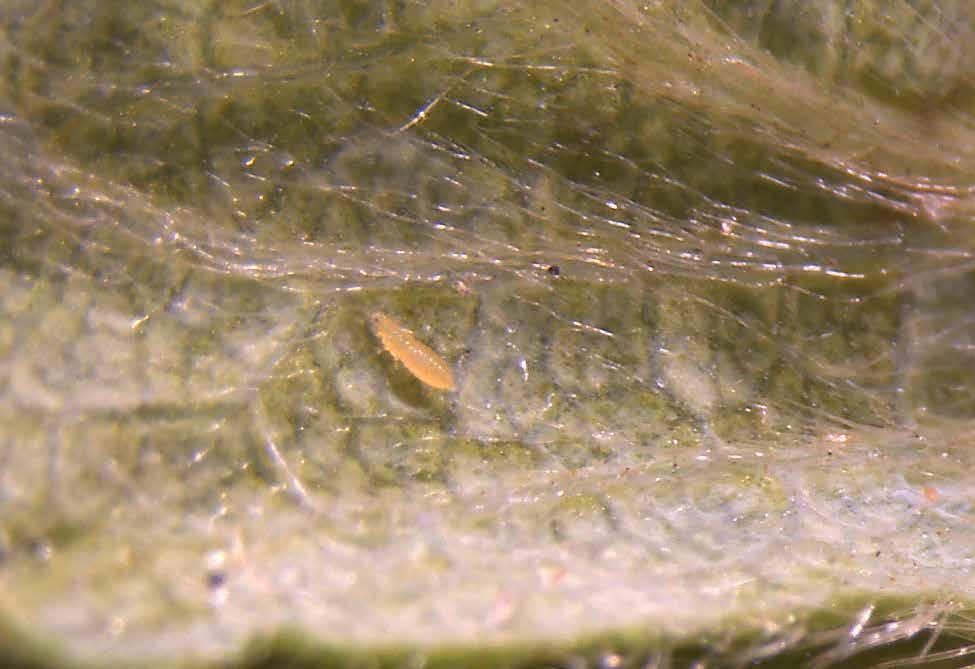
 By Brad Buck
By Brad Buck
Florida strawberry growers can use less pesticide and save money as they try to control a mighty pest known as chilli thrips, University of Florida research shows.
An invasive pest in the southeastern United States, chilli thrips were introduced to the United States from Southeast Asia. The first report in Florida came in 1991 in Okeechobee County and then in 1994 in Highlands County.
Sriyanka Lahiri, a UF/IFAS assistant professor of entomology, focuses on the potential damage chilli thrips can cause to Florida’s $500 million-a-year strawberry industry. Strawberries grow mostly in Hillsborough County, but also in Manatee and Polk counties.
In the newly published study, Lahiri and her colleagues found chilli thrips prefer to aggregate in about a 100-meter radius outside the center of strawberry fields. That’s because in the field-border area, chilli thrips are close to adjacent woods, where they can easily live during the summer and reinfest during the next strawberry season.
“Our findings are important to growers as they can now save money and time by having to spray a lower vol-
ume of insecticides in smaller portions of their field,” Lahiri said. “They can protect the beneficial insects in and around their field by doing this, which, in turn, will assist with maintaining more healthy strawberry plants.” Specifically, growers should spray no closer than 100 meters – or about 330 feet of their field border. They should leave the rest of the field either untreated or manage it by using biological control agents, botanicals, and flowering plants.
Field-border pesticide treatments can reduce pesticide use to two to three applications per season, down from the typical six to 10 sprays of the entire field done now, she said.
Additionally, strawberry plants treated with insecticides are likely to produce seven times more marketable fruit than those suffering from season-long chilli thrips infestation, Lahiri said.
“To manage the first round of migrating chilli thrips populations, growers will need to use any one of the effective chemical sprays,” said Lahiri, a faculty member at the Gulf Coast Research and Education Center. “Once the initial population has been knocked down to man-
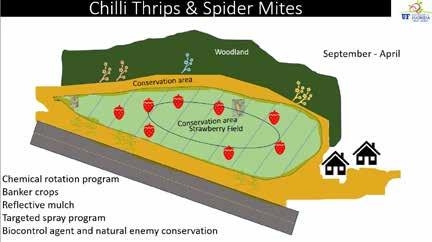
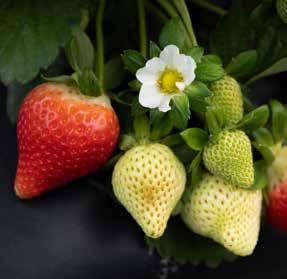
ageable levels, you can use biological control agents such as predatory mites, minute pirate bugs, Beauveria bassiana-based compounds or botanical insecticides such as Captiva Prime and Azera.”
The mission of the University of Florida Institute of Food and Agricultural Sciences (UF/IFAS) is to develop knowledge relevant to agricultural, human and natural resources and to make that knowledge available
to sustain and enhance the quality of human life. With more than a dozen research facilities, 67 county Extension offices, and award-winning students and faculty in the UF College of Agricultural and Life Sciences, UF/ IFAS brings science-based solutions to the state’s agricultural and natural resources industries, and all Florida residents. ifas.ufl.edu | @UF_IFAS

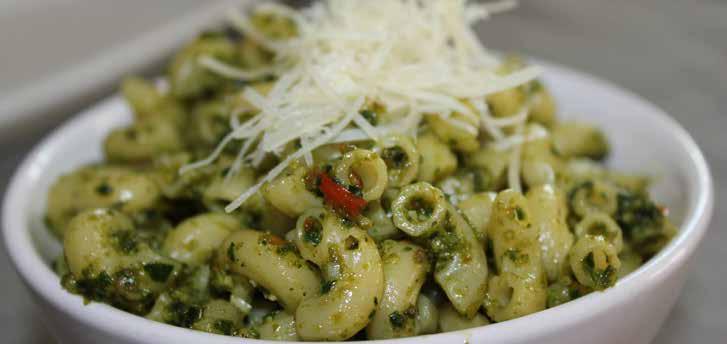
Collard greens are a leafy green vegetable that is a staple in many cuisines around the world. They have a lengthy history that dates back thousands of years. They are a member of the Brassica oleracea species, which includes other vegetables like kale, cabbage, and broccoli. This species originated in the Mediterranean region and has been cultivated for thousands of years. The exact historical origins of collard greens are uncertain, but it is believed they were first domesticated and cultivated in ancient Greece and Rome.
Throughout history, collard greens have been valued for their nutrition and versatility in cooking. In ancient Greece, they were highly esteemed and considered a valuable source of sustenance. The Greeks and Romans would cook collard greens in various ways, such as boiling or steaming, and often seasoned them with spices to enhance their flavor.
Southerners love their greens. A time-honored tradition in southern kitchens, greens have held an important place on the table for well over a century, and there is no other vegetable that is quite so unique to the region.
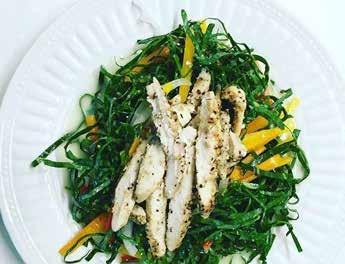
The traditional way to cook greens is to boil or simmer slowly with a piece of salt pork or ham hock until they are very soft. Typically, greens are served with freshly baked cornbread to dip in the collards’ juice. “Our family has always been pretty creative with our food and what we do with food in our household,” Nessa McClain said. “Collard greens are a Southern tradition, more so in African American households in terms of we have it on special occasions, or we have it every Sunday. Collard greens are made one way.” McClain decided she wanted to break the mold of traditionally cooking collards and try some new spins on making collard greens. McClain is the owner of Gone Green and she used collard greens to create everything from hummus to collard greens pesto sauce. “I was born and raised in Plant City,” McClain said. “I moved to Maryland in 2003 and my friends were having a welcome to Maryland party for me and I decided I was going to make a collard green dip dish, very similar to a warm artichoke dip. Everyone was against me messing with collard greens, but I still made the dip. From that point on, everywhere I went, everyone had to have my collard green dip.”
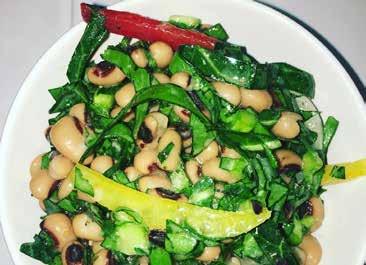

McClain loves the healthy aspect of collard greens and that it’s a superfood, but she wasn’t amused by eating collard greens in the traditional way she was raised. “In my mind, I wanted to explore different ways of eating collard greens,” McClain said. “As you grow up and mature in your eating habits, you try ethnic foods or different kinds of foods. So, from 2003 to 2010 I started playing around with different recipes and creating different recipes using collard greens. I even wrote a cookbook about collard greens called The World’s Gone Collard Green.”
McClain got involved in some farmers and artisan markets while living in Maryland. When she moved back to Florida, she found the Lakeland Downtown Farmers’ Curb Market. Gone Green had found a new home in the Sunshine State. “I like doing the markets because it gives me a chance to interact with my clients,” McClain said. “I love having them sample my products and see how differently collard greens can be used.”
Keeping things local is important to McClain. “I do my very best to source all my collard greens and ingredients locally,” McClain said. “Some of the ingredients I use are hard to find locally, so I would love to partner with local growers or farms to help me source everything I use in my collard creations locally.” If you would like to learn more about Gone Green or if you’d like to see which area market McClain is attending during the month, you can visit her Facebook page at https://www.facebook. com/GoneGreens. The Lakeland Downtown Farmers’ Curb Market is located at 117 N Kentucky Ave. in Lakeland.



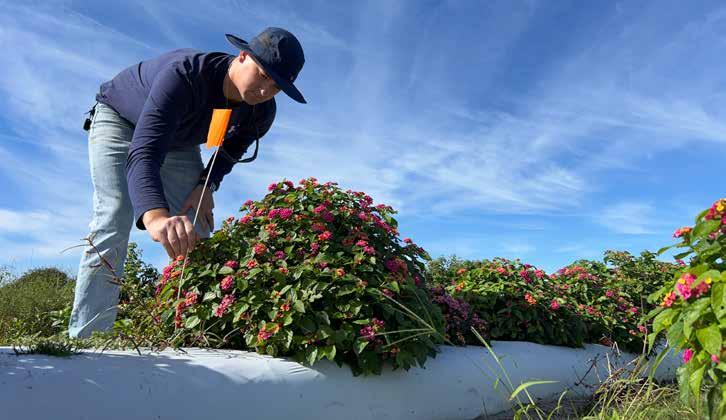
Stephen Brooks Parrish, soon to be a Doctor of Horticultural Sciences, is characterized by his University of Florida, Institute of Food and Agricultural Sciences (UF/ IFAS) faculty adviser Dr. Zhanao Deng as “an excellent graduate student, who has made important discoveries and developed very valuable new experimental varieties for the industry and general public.”
Parrish has studied under Dr. Deng at the UF/IFAS Gulf Coast Research and Education Center in Balm since 2019, earning his Master of Science in Horticultural Sciences in 2021 and his doctorate, which he anticipates being awarded in August. He will shortly become a “hands-on” plant breeder for the UF Environmental Horticulture Department in Gainesville.
As part of Dr. Deng’s GCREC research team, Parrish has “been sterilizing lantana and porterweed to develop new, non-invasive cultivars for the Florida environmental horticulture industry and gardeners,” said Dr. Deng. “Some lantana and porterweed are considered invasive because they can pollinate our native lantana and porterweeds and spread to the natural areas. New sterilized, non-invasive varieties are desirable alternatives to replace invasive types. Brooks has made excellent progress in sterilizing lantana and porterweed.
“Brooks has generated a lot of new genomic resources that will be very useful for lantana breeding and genomic research,” said Dr. Deng. “Brooks has also been

highly productive in scholarship. He has published eight scientific papers since he began his graduate studies, which is rare.
“He also has numerous recognitions and has won some prestigious awards, including the UF/IFAS Jimmy Cheek Graduate Student Medal of Excellence.” Created to honor Dr. Cheek’s 33 years of service to UF as a faculty member in agricultural education and communication, College of Agricultural and Life Sciences (CALS) Assistant Dean and Dean, and senior vice president for agriculture and natural resources, the award is presented to a graduate student “who demonstrates high academic potential and achievement, leadership and community involvement, commitment and passion about his or her chosen field of study, personal sacrifice for his or her education, and effort above and beyond the call of duty.”
While Parrish’s record of achievement continues to grow, it is not surprising and can be traced to family and FFA. His parents, Terry and Ronda, are both UF alumni, as is his older brother, Hunter. Brooks grew up working on his uncle’s operation, L & J Farms, where they grow watermelon and hay, and also raise cattle. “You name it and I’ve done it over the years,” he said in reference to both hands-on tasks and supervisory responsibilities.
He joined FFA in the sixth grade and his involvement covered just about every aspect open to members from various competitions to public speaking, livestock judging, and more. Brooks became Florida FFA President in 2015, a position his father, Terry, held 30 years previously, and something Brooks hoped to achieve while a high school student. He opted to forego high school baseball his senior year in order to properly prepare for his FFA campaign. Parrish is thankful for the guidance he received from several FFA mentors in high school and support of his parents that helped him achieve his presidential aspirations.
While State FFA President, Parrish and his leadership team developed the “Cultivate a Legacy” theme as the focus for their year in office. “Developing leadership and related skills is important, but we felt the need to shift focus to skills that could be applied back to agriculture,” he said. His commitment to that end is readily apparent in his achievements while a graduate student and in his next career step as a plant breeder for UF.
Congratulations Brooks and best of luck to you and your wife, Anne, Program Coordinator for the Wedgworth Leadership Institute, as your journey continues.


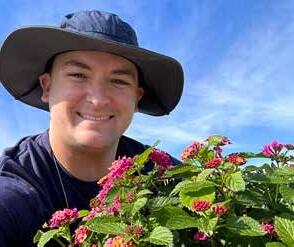
























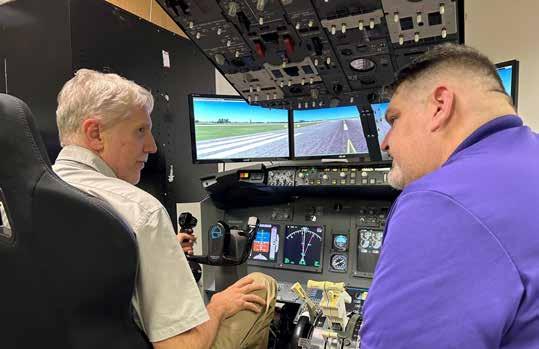
Caring for and showing animals and other traditional agriculture activities remain a staple of the 4-H experience. At the same time, 4-H is growing and developing – like 4-Hers themselves – to help youth hone tech skills.
Hillsborough County is home to the hub of Florida 4-H technology. The 4-H Maker Lab, run by UF/IFAS Extension state specialist Brent Broaddus, is a room full of 3-D printers and other technology that visiting youth groups can use, and they leave with things they’ve made.
It’s also the only place I know of where a Florida 4-Her can land a plane. The flight simulator isn’t cutting edge—it’s about a decade old now—but it does offer the experience of maneuvering multiple controls while monitoring altitude, speed, direction, and angle.
Broaddus put me in the pilot’s seat. Takeoff went smoothly. Landing was more of a challenge. I needed to work the controls much more under Broaddus’s tutelage and had to make a few passes to find the proper approach for landing. I touched down on grass and crossed runways as I drifted to a stop. But I was on the ground safely.
The experience deepened my appreciation for 4-H in several ways. First, it was simply fun. Second, it gave me an opportunity to try a new skill. Third, it put me in a new environment and had me focused on learning in a safe space. 4-H’s learning-by-doing philosophy perfectly aligns with my priority to introduce more experiential learning at the university level.
I also reflected on how we need both agricultural programming and technology-based programming to develop future leaders for Florida. In the best-case scenarios, we can combine agriculture and technology. For example, Clay County 4-Hers developed an experiment on growing spirulina in microgravity that won a competition to have a youth project flown to the International Space Station.
You don’t need to visit Broaddus’s lab or be awarded space on a rocket to benefit from 4-H. Hillsborough and Polk counties have numerous clubs with a broad range of interests. To find 4-H opportunities in your area, visit Clubs - Hillsborough County - University of Florida, Institute of Food and Agricultural Sciences - UF/IFAS (ufl.edu) (https://sfyl.ifas.ufl. edu/hillsborough/4-h-youth-development/clubs/) or How to Join 4-H - Polk County - University of Florida, Institute of Food and Agricultural Sciences - UF/IFAS (ufl.edu) (https:// sfyl.ifas.ufl.edu/polk/4-h-youth-development/4-h-youth/ how-to-join-4-h/).
Please encourage your daughters, sons, nieces, nephews, and neighbors to participate. Consider volunteering with a club. Order a 4-H specialty license plate for your vehicle. Join the many farmers across the state who loan their animals to youth to show in county fairs.
And help me carry the message that the 4-H summer camp experience is an invaluable part of childhood. One of my highest priorities since becoming the leader of UF/IFAS has been to renovate and rebuild our residential 4-H camps.
It is a steep challenge to raise the millions of dollars this will take, from the Legislature, private donors, and any other sources interested in investing in Florida youth. But we owe it to our youth to give them facilities where they can learn new skills and make memories for a lifetime.
It’s all about increasing opportunities to develop our youth, whether singing camp songs, showing animals, or bringing a plane safely in for a landing.
Rob Gilbert is the University of Florida’s interim senior vice president for agriculture and natural resources and leader of the UF Institute of Food and Agricultural Sciences (UF/IFAS).
Plant City is well known as the “Winter Strawberry Capital of the World,” but it’s only one of more than 60 crops grown in the county. This time of the year, another crop is at the forefront, fresh, juicy watermelons. Over a thousand acres are grown within eastern and southern Hillsborough County, producing about 30 million pounds of mostly seedless, mediumsized melons.
This is just part of a statewide crop that includes both seeded and seedless varieties and makes Florida the number one watermelon-producing state in the U.S. with total production exceeding one billion pounds. With this in mind, the Florida Conservation Coalition, Inc. will be sponsoring a watermelon eating contest at the exciting new “Catch the Spirit & Celebrate America” Festival scheduled for 1 p.m. to 10:00 p.m., July 4, at the Hillsborough County Fairgrounds, 215 Sydney-Washer Road, Dover. The Festival follows Brandon’s 4th of July parade, slated from 10 a.m. until noon, presented by the Greater Brandon Action Network.


The watermelon eating contest, set for 5:30 p.m. at the Spirit Stage at the fairgrounds, is open to individuals 18 years and older and will consist of 15-minute rounds, with the winners chosen based on total consumption. Any contestant expelling watermelon will be disqualified and the decision of the judges will be final. Cash prizes of First Place - $75.00; Second Place- $50.00 and Third Place - $25.00 will be awarded. In addition, all participants will receive gift bags with an assortment of items. Pre-registration is requested and complete rules may be found on the fair’s website: www.hillsboroughcountyfair.com or by contacting Betty Jo Tompkins, (813) 477.8332; bjt6890@yahoo.com.
Admission to the Festival is free, with parking at $10.00 per vehicle. Other activities at the Festival include live bands, Little Miss and Mr. Firecracker contest, a costumed pet parade, antique car show, a youth play area, arts and crafts displays, and much, much more! The event will close with a patriotic drone show at 9:00 p.m.
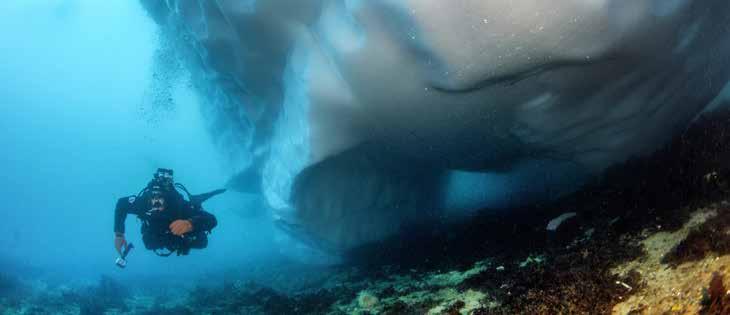
John Humphreys had never seen snow in person until he ventured to Buffalo, New York in January — to scuba dive. Just a month later, the 15-year-old Tampa resident and 4-H member was navigating underwater around Antarctic icebergs.
Now back from his nearly three-week journey, John plans to spend most of his summer analyzing iceberg-related data he and 15 adult citizen scientists collected while under his instruction. His ability to convey what he learned through a research paper and two presentations in August will ultimately determine whether he earns certification as a MasterNaut, the highest distinction within the SCUBAnauts marine science education program.
“The reason he went on this trip was to help answer some major questions and to let people know that kids can do it: that if you work hard enough toward something, you can achieve your goal, and he did,” said Nicole Humphreys, John’s mom. John’s ascent to potential MasterNaut status began in 2020, when he joined 4-H. Fellow members of the organization introduced him to scuba diving, and he became a SCUBA-naut, eventually earning certifications in advanced open water, rescue, and coral restoration diving before reaching the master scuba diver classification, the highest recreational certification level.
In October, he learned about a research trip to Antarctica scheduled to coincide with the 150th anniversary of the HMS Challenger’s 1874 crossing in the vicinity.
“Since the HMS Challenger made so many contributions to understanding our oceans, this trip was to commemorate the ship’s efforts and contributions and bring a new era of citizen science together,” John said.
The organizers of the trip approved John’s request to join them in November. He quickly set about acquiring a drysuit capable of insulating his body against freezing water and achieved drysuit certification. Subsequent training for Antarctica required 50 dives, 10 of which took place within water of 39 degrees or below.
Katie Cooper, John’s SCUBAnauts instructor, accompanied him on the trip. She described him as “an incredibly determined young man.”
“When he first expressed interest, I had reservations because it is a very specialized activity that requires extensive preparation, even beyond the training and experience he already had,” Cooper said. “But the more we talked about it, we developed a plan, and I knew he would put his all into getting ready.”
Their ship, the 300-foot Ortelius, left Ushuaia, Argentina, on Feb. 21. Diving into 32-degree waters, John and his team classified the icebergs they encountered, documenting their shape, color, and size. While aboard, he participated in a livestreamed informational video for elementary school students around the world. John and Amy Moran, a marine biologist at the University of Hawaiʻi at Mānoa, showed viewers their extensive gear and described the wildlife they had observed on the trip: whales, leopard seals, sea spiders, sea anemones, plankton, limpets, sea stars and three species of penguins. “You’re the youngest person I know of who has ever dived in the Antarctic,” Moran told John during the livestream.
A lofty accomplishment, sure, but it pales in comparison to John’s ultimate aspiration of becoming a mission commander astronaut specializing in Mars exploration.
“My hope is to help others reach for their goals and dream big because even something that sounds as impossible as diving in Antarctica at 15 is not if you have the drive to do it,” John said. “You just have to know it’s possible.”
The mission of the University of Florida Institute of Food and Agricultural Sciences (UF/IFAS) is to develop knowledge relevant to agricultural, human and natural resources and to make that knowledge available to sustain and enhance the quality of human life. With more than a dozen research facilities, 67 county Extension offices, and award-winning students and faculty in the UF College of Agricultural and Life Sciences, UF/IFAS brings science-based solutions to the state’s agricultural and natural resources industries, and all Florida residents. ifas.ufl.edu | @UF_IFAS
4-H is the youth development program of the land-grant university system and Cooperative Extension System. The
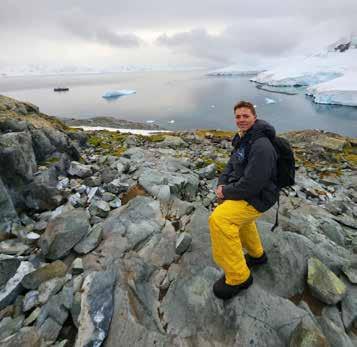
program provides hands-on educational programs and experiences for youth ages 5 to 18 with the objective of developing youth as individuals, and as responsible and productive citizens. In Florida, 4-H is administered by University of Florida/ IFAS Extension and Florida A&M University.



Courtesy of the Florida Department of Agriculture and Consumer Services. Chef Justin
Stuffed Florida Zucchini and Yellow Squash
Parmesan Stuffed yellow squash on a baking sheet.

2 medium Florida zucchini or large yellow squash
1/2 cup ricotta cheese
1 ½ cups mozzarella cheese, shredded
1 cup marinara sauce (your favorite)
1/4 cup Parmesan cheese, grated
1/2 cup panko breadcrumbs
2 tablespoons fresh basil or
1 teaspoon dried
Olive oil for cooking
Sea salt and fresh ground pepper, to taste

Cook rice according to package directions and set aside. Dice the chicken breasts into 1-inch pieces and store in the refrigerator until ready to cook. Prepare and slice all the vegetables and set aside. Mix soy sauce, sesame oil and garlic and set aside.
Preheat a large sauté pan over medium-high heat and add 1 tablespoon of olive oil. Beat two eggs and scramble, set aside. Next, season the diced chicken with salt and pepper and sauté for 6 minutes or until cook thoroughly. Remove from pan and set aside. Add another tablespoon of olive oil to the pan and sauté the carrots for one to two minutes. Add the bell pep -
Timineri
Preheat the oven to 375 degrees. Cut off the stem side of the zucchini or yellow squash. Cut zucchini or yellow squash evenly in half lengthwise. Using a small spoon, scoop out the seeds from each half to create room to hold other ingredients. Preheat a large sauté pan over medium-high heat. Add 1 teaspoon of olive oil to the preheated pan. Season the zucchini or yellow squash with salt and pepper. Place the zucchini or yellow squash skin side up in the sauté pan and cook for about 2 minutes on both sides. Remove from pan and place on a cookie sheet skin side down.
In a small mixing bowl, combine panko breadcrumbs, 1 tablespoon olive oil, chopped basil and Parmesan cheese. Season ingredients to taste with salt and pepper, and stir to combine. Evenly distribute the ricotta cheese and marinara sauce on top of the zucchini or yellow squash. Top the yellow squash and zucchini with the shredded mozzarella cheese. Evenly sprinkle the breadcrumb topping mixture on top of the zucchini or yellow squash. Bake the stuffed zucchini or yellow squash for 10 minutes or until topping is golden brown and cheese is bubbly. Remove from oven and let cool slightly. Serve warm.
2 (8 ounce) Florida chicken breasts
1 Florida bell pepper (any color)
1 cup Florida cabbage, sliced thin
2 Florida carrots, sliced thin
6 Florida mushrooms, sliced thin
2 cups Florida spinach
2 eggs
3 cups cooked rice (brown or white)
2 green onions, sliced thin
2 garlic cloves, minced
2-3 tablespoons low sodium soy sauce or Tamari
1 teaspoon toasted sesame oil
3-4 tablespoons olive oil, for cooking
Chili sauce or sriracha (optional)
Sea salt and fresh ground pepper, to taste
pers and cabbage, season with salt and pepper and cook for additional two minutes. Remove the vegetables and set aside. Using the same pan, add a small amount of olive oil and sauté the mushrooms and spinach. Add this to the rest of the cooked chicken and vegetables. Lastly, add a 1 tablespoon of olive oil to the hot pan and stir-fry the rice until it is slightly crisp, add the scrambled eggs and combine. Pour the soy sauce mixture and stir to combine.
Serve chicken and vegetables over fried rice in large bowl.
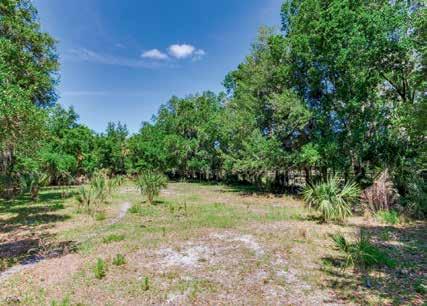

Located in Lithia, on one of the most picturesque roads in the county, this 13.83± acre parcel offers a perfect blend of natural beauty and pastoral charm. From the moss draped oaks to the graceful palmettos, and the open pasture, the landscape is a harmonious blend of Florida’s native flora.
Pricing: $525,000
24.24± acres on Stafford Road in Plant City, located along the explosive I-4 corridor, just a mile away from the I-4 on ramp. This property includes rental income from the homes and farmland, as well as several improvements including 2 homes, 1 office, pole barn with cooler and shop.
Pricing: $1,100,000



METAL ROOFING
Thousands of 8ft. & 10ft. sheets. In Stock. Prices from $6 and up. Custom lengths available. 813-752-7088 ask for Ferris
ALUMINUM
We have all your aluminum needs! Screen Room, carports & awnings. Call Blake (813) 752-3378
WINDOW SCREENS
We make window screens of all sizes available in different frame colors. Call Ted 813-752-3378
CABINETS
All wood kitchen cabinets. All wood vanities. Custom made to your size. Call Chris 813-752-3378
VINYL SIDING
Many colors and styles to choose from. Ask for Ted. 813-752-3378
MOBILE HOME SUPPLIES
Everything you need under ONE roof! Call Blake 813-752-3378
NEW, USED & ABUSED.
CALL FOR A WINDOW QUOTE.
We are a MI Windows dealer. Our windows are energy star, lifetime warranty. Call Broke & Poor 813-752-3378
USED ZERO TURN
Zero turn mowers, several to choose from. Call Alvie 813-759-8722
2018 BAD BOY MAVERICK
54” cut, Kawasaki engine. $3,950 Call and ask for Alvie 813-759-8722
MECHANIC NEEDED
Agricultural equipment. Pay with benefits based on experience. Call David 863-537-1345 or Alvie 813-759-8722
PARTS COUNTER HELP
Wanted for parts look up and sales. Experience in the agriculture equipment service. Speak with Alvie. 813-759-8722
2001 MAHINDRA 2810 TRACTOR
4x4 Tractor with loader. 28hp, shuttle transmission. $7,850 Call Alvie 813-759-8722
Trade-Ins Welcomed, Service Department Available. Exit 22 • S. Frontage Rd. Plant City 813-752-4459
JOHN DEERE
Looking for your new tractor? Come see us at Everglades Farm Equipment. evergladesfarmequipment.com 2805 SR 60 West, Plant City 813-737-1660
NEW “LEFT OVER” MASSEY FERGUSON
2606H 65hp tractor. Loader, 4x4, manual shutter transmission, hydraulic remotes. $38,850. Call Alvie 813-759-8722
2018 MAHINDRA MPACT 750C
6 passenger UTV. 4x4, winch, 375 hours. $9,500. Ask for Alvie 813-759-8722

NEW 2023 BAD BOY BANDIT
750 UTILITY VEHICLE
4x4, liquid cooled EFI engine, power steering, dump bed, roof, 2-piece windshield, winch, mirrors, 2-year limited warranty. $14,975.00. Financing available WAC. Call 813-759-8722
Ask for Alvie.
2021 BOBCAT UV34XL
Six passenger 4x4 utility vehicle. Very good condition. $12,500 Call and ask for Alvie today! 813-759-8722
TITAN 3515
15” flex wing cutter. Used on a one-year rental. Very good condition. $12,500.00. Call 813-759-8722 Ask for Alvie.
USED CULVERT PIPE FOR SALE
20", 22" & 24" OD. Please call O'Cain Inc. 863-425-4171 for inquiries.
OLD ANTIQUE BLUE STOVE
Bread warmer, chrome trim. You have got to see it to believe it! Call Ted for more details. 813-752-3378
DOORS & WINDOWS SPECIAL ORDER
No upcharge. House & Mobile Home. Many standard sizes in stock. Ask for Blake. (813) 752-3378
KITCHEN CABINETS & VANITIES
Get quality all wood cabinets for less than the BIG Box STORES! Call Today! Ask for Blake. (813) 752-3378
OVERSTOCK SPECIAL
Barn doors starting at $80.00 Call Ted 813-752-3378
CULVERT & DRAIN STEEL PIPE NOW AVAILABLE & PRICED TO MOVE FAST!
• 9ft. and 10ft. Diameter used railroad tank car culverts 40 to 50 ft. lengths.
• 20in and 24in Diameter used steel pipe - 45 to 50ft lengths.
ContactGATEWAY PIPE INC. Naples, Florida. Ask for Gary 636-346-3320 Delivered prices available.
FREE Wooden Shipping Pallets
All sizes! Call Alvie 813-759-8722
24 HOUR SERVICE
Coggins Plumbing licensed • bonded • Insured. www.cogginsplumbing.com 813-643-7173
FARM BUREAU INSURANCE
We have you covered! Call us today. 813-752-5577
ALAN’S AIR CONDITIONING
Residential, Commercial Sales SVS & Repair. Legendary service for over 20 years! 813-752-0821
SHOWER STALLS - FIBERGLASS
Scratch and dent shower stalls - fiberglass perfect for hunting camps. $150 you pick! Call us! 813-752-3378
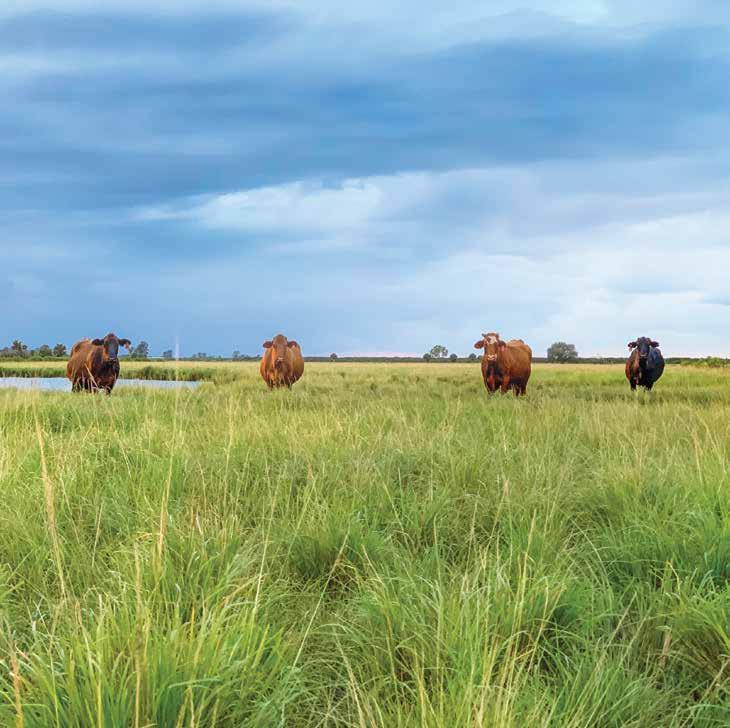
•
•
•
•
•
•
